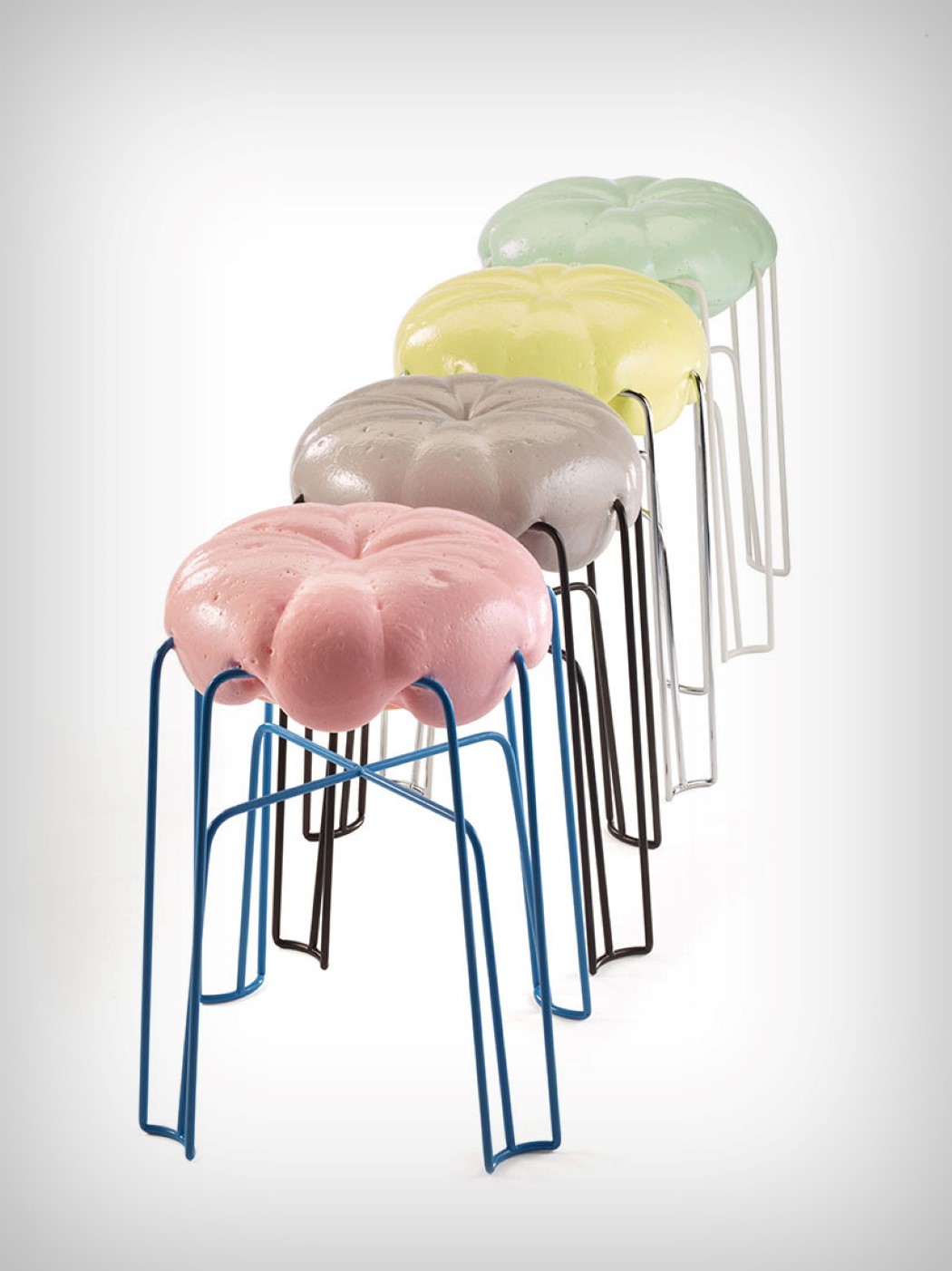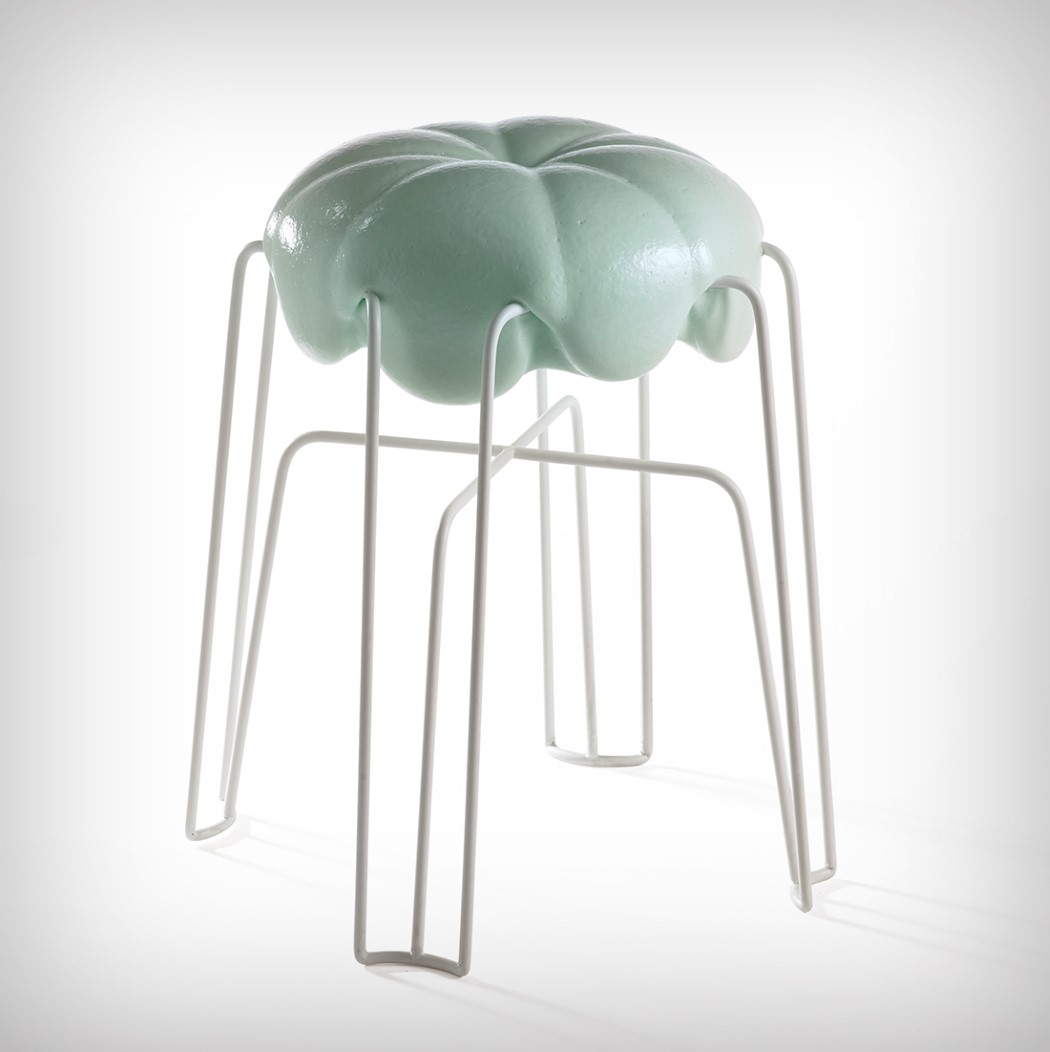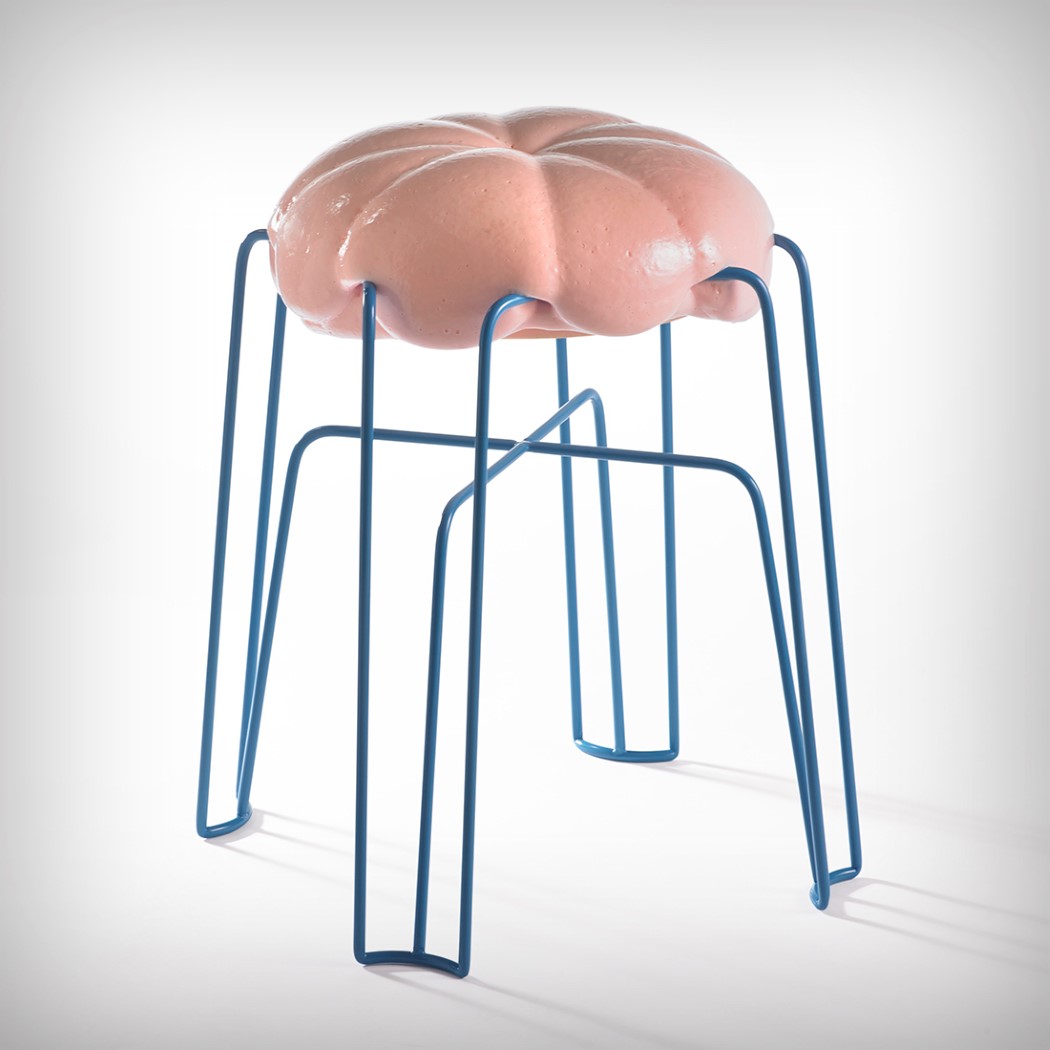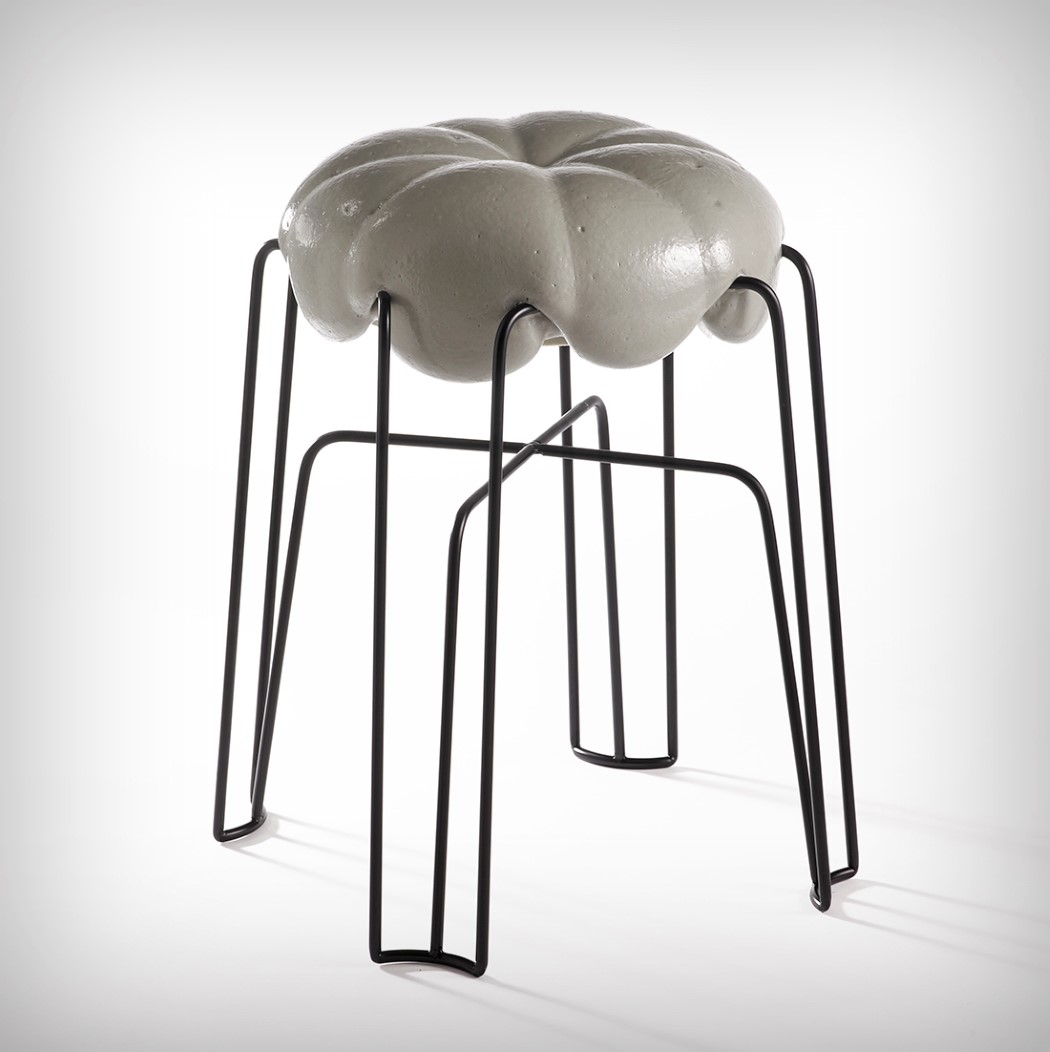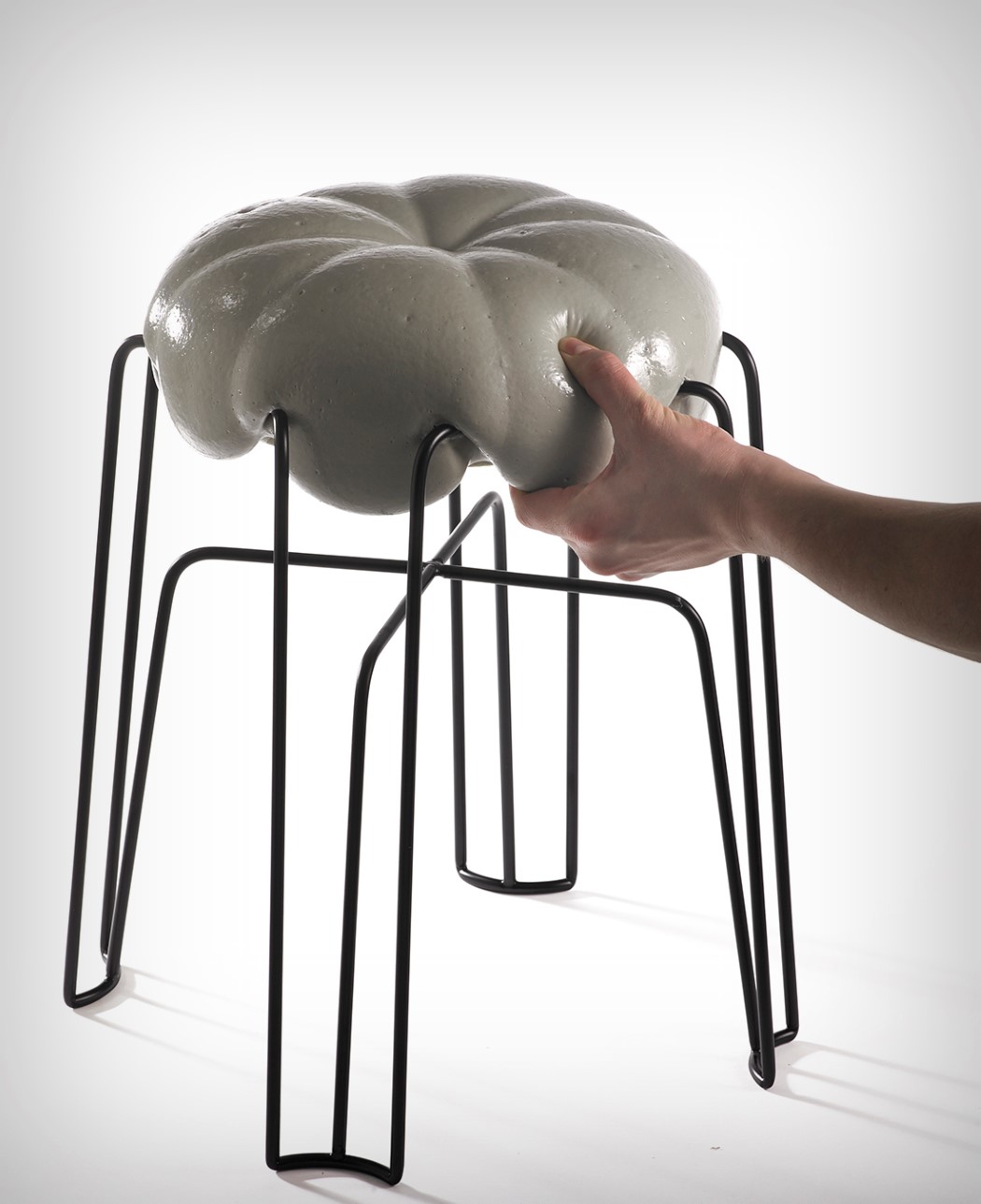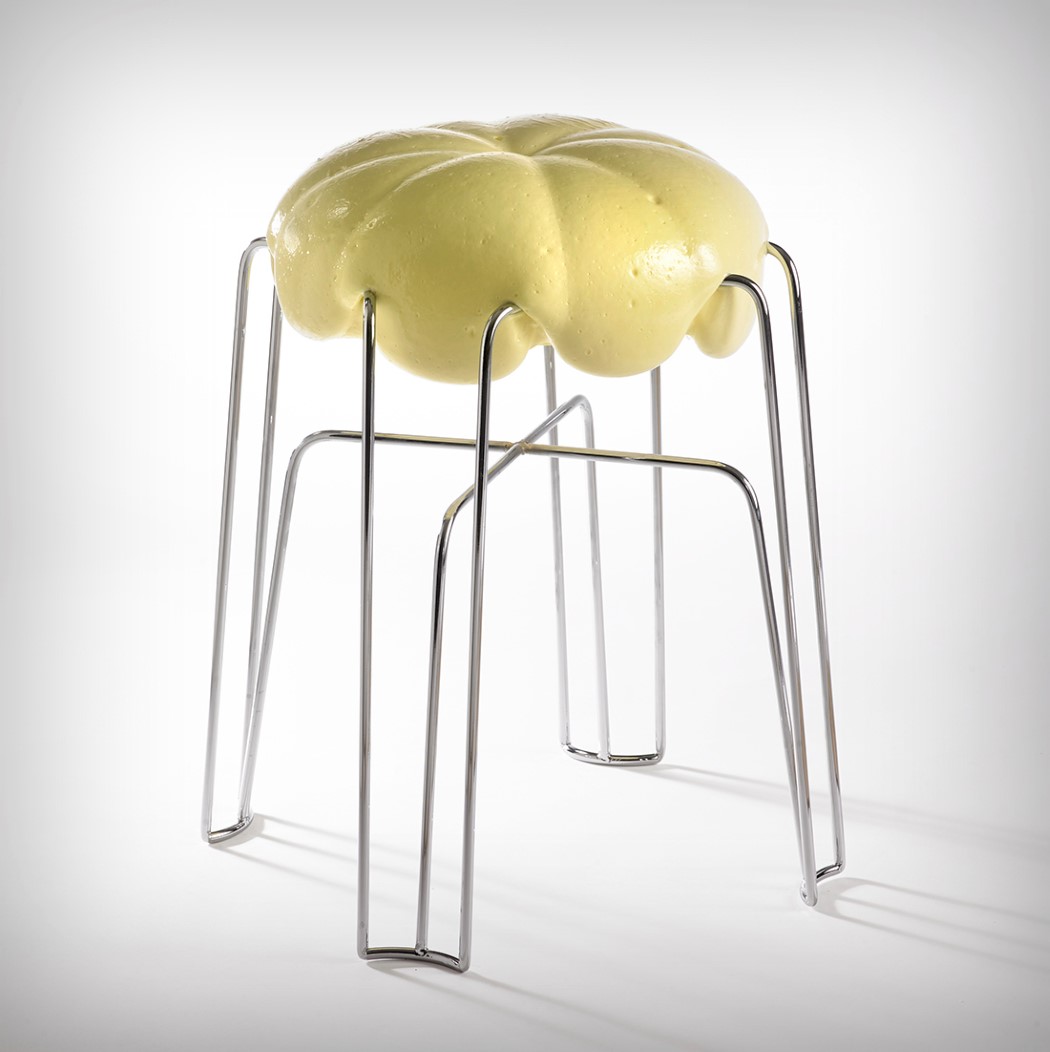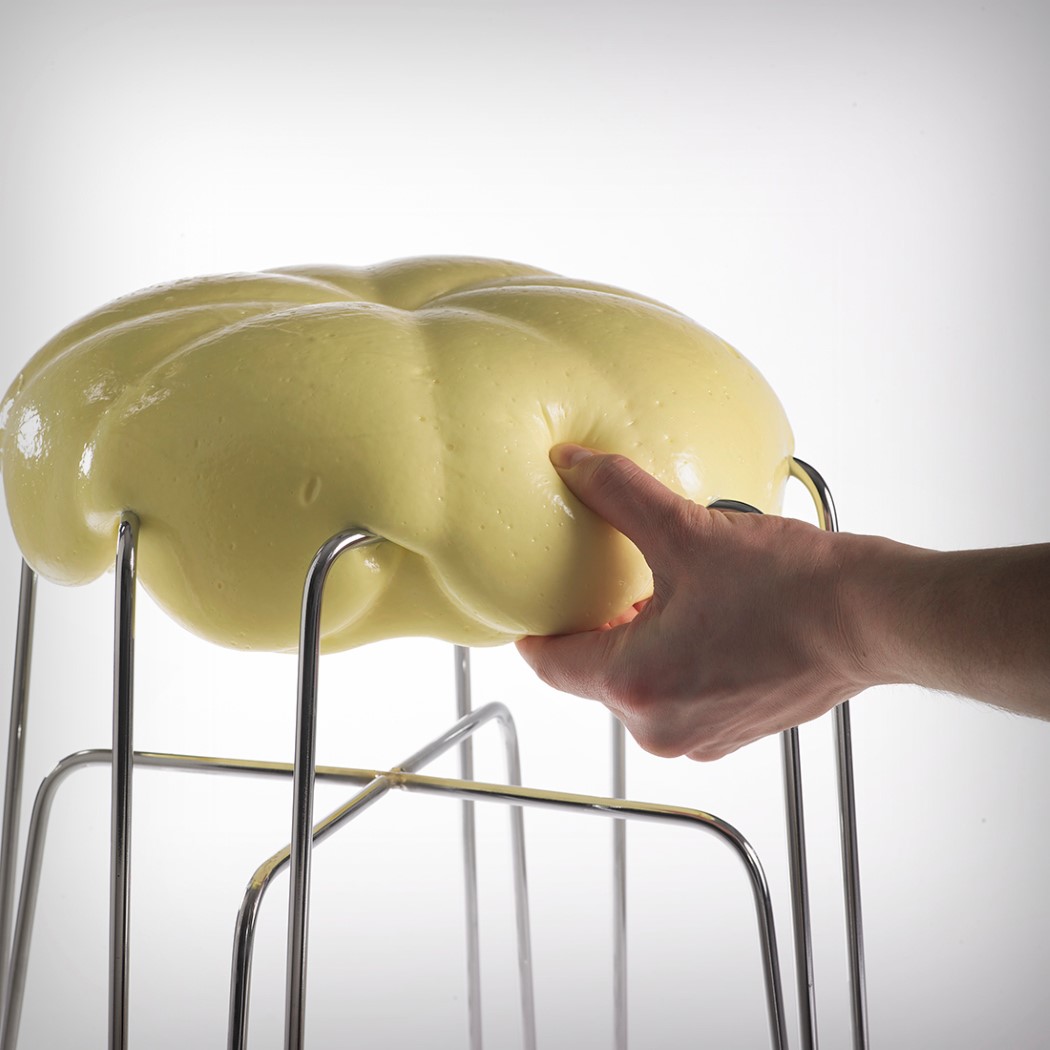
The new 20th Anniversary Tamagotchi are back in stock online at amazon.com. The new edition of the Tamagotchi toy was sold out for a long time, but now the digital pets are back in a big way on...
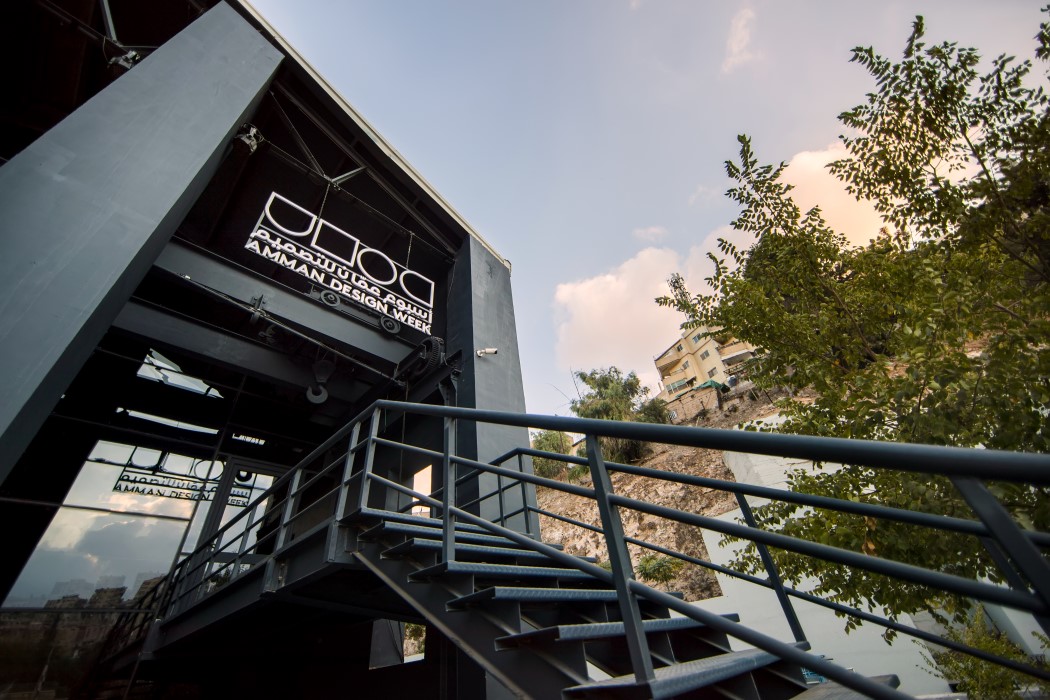
How do you get an entire city, no, an entire country to talk about design? To learn how it evolved from art, culture, and an innate need to solve problems? You host a week-long event open to all, housing some of the greatest design talent from 11 countries, talking about design as not just a profession, but also as a way of life.
With the theme “Design Moves Life Moves Design”, Amman witnessed its second Design Week in two years, seeing a footfall of more than 35,000 people as designers from countries like Bahrain, Morocco, Palestine, UAE, Saudi Arabia, Lebanon, Netherlands, Norway, Italy and USA gathered to display their works to show how life can impact a designer, and how their designs in turn can impact life!
This year’s Amman Design Week was in every sense bigger, but more nuclear. Rather than having events at three different locations across the city, the festival saw everything happen in the town’s creative hub, AKA the Hangar and the Ras Al Ein Gallery. With just a 40ft road separating the two venues, patrons could visit all the exhibits in a single day, spending much more time at the event. With incredible design works within the Hangar, along with a Student Exhibition, to a Crafts District filled with indigenous crafts and handicrafts on display and for sale, as well as a Cultural Plaza for talks on design, the Amman Design Week left no stone unturned.
We first look at the Hangar. An iconic building in its own right, the Hangar used to be Amman’s Power and Electricity Hub. After the city started expanding, the Hangar was decommissioned and shut down. It now houses a different kind of spark (if you know what I mean!), as designers gather to showcase their creative abilities and techniques while also conveying a variety of messages. With more exhibits than the last time, the Hangar’s curator, Ahmad Humeid had to be extremely selective, adhering to the theme but also showcasing diversity. With massive installations on the outside to attract one’s attention, and a wide selection of design work on the inside, the Hangar provided what can only be described as an accurate image of how talented the designers in the middle east are, and how this talent can be harnessed to truly uplift lives in and around the area.
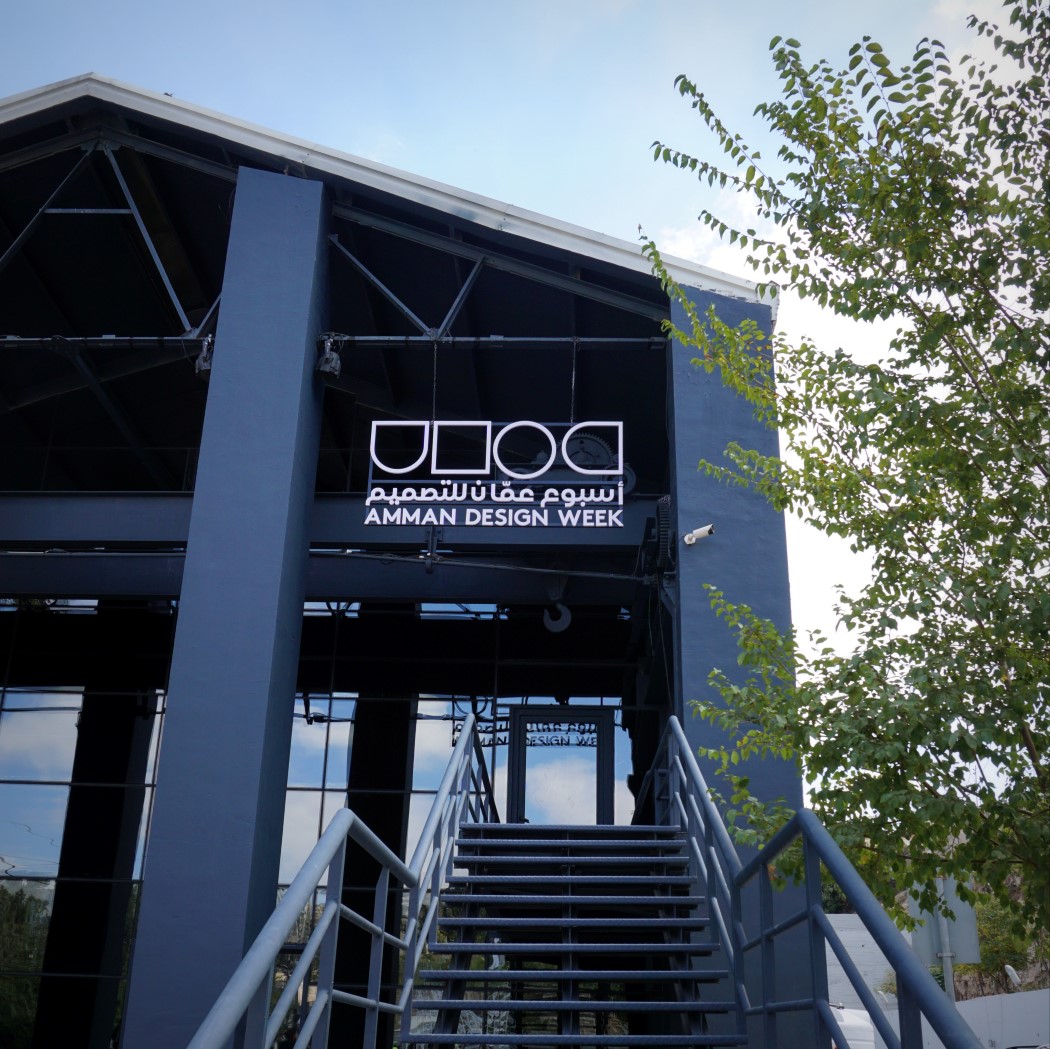
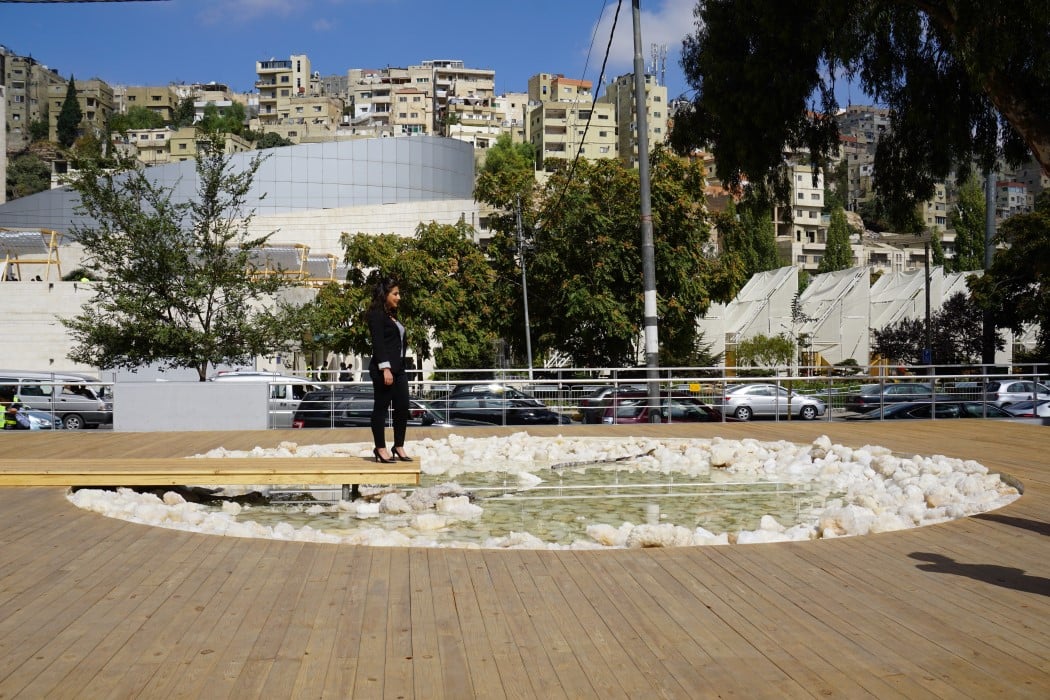
Amal Ayoub’s installation shows how the Dead Sea is losing its salt over time with commercial abuse. The installation fills up with water and the salt crystals gradually dissolve.
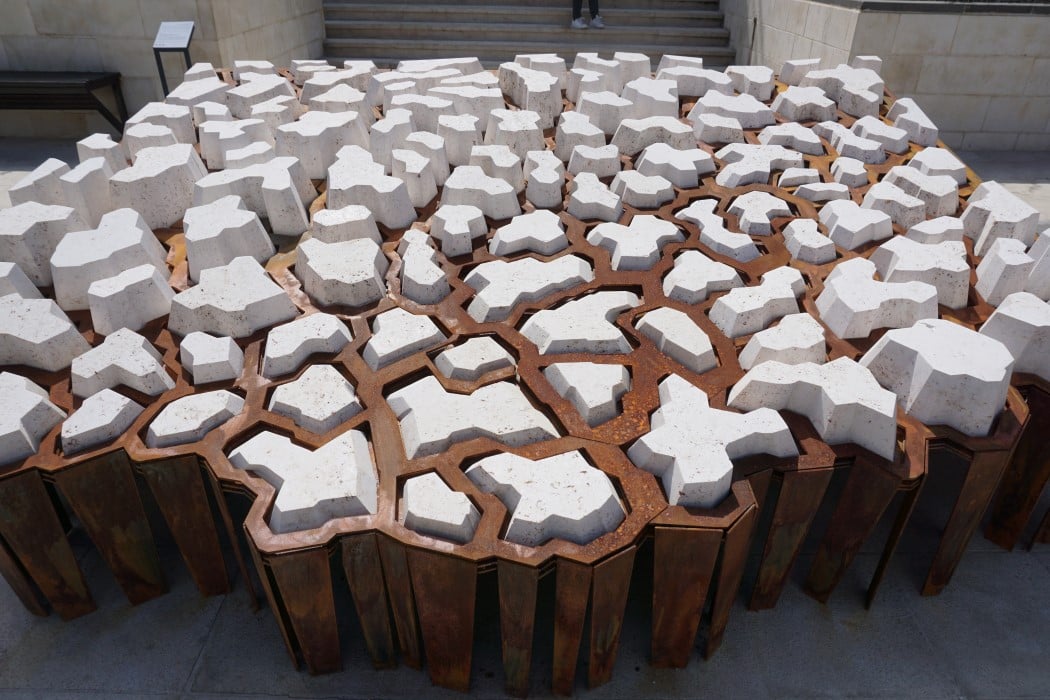
MEAN (Middle East Architecture Network) showed a heart-rending picture of the earth drying up and cracking with their stone and distressed metal installation.
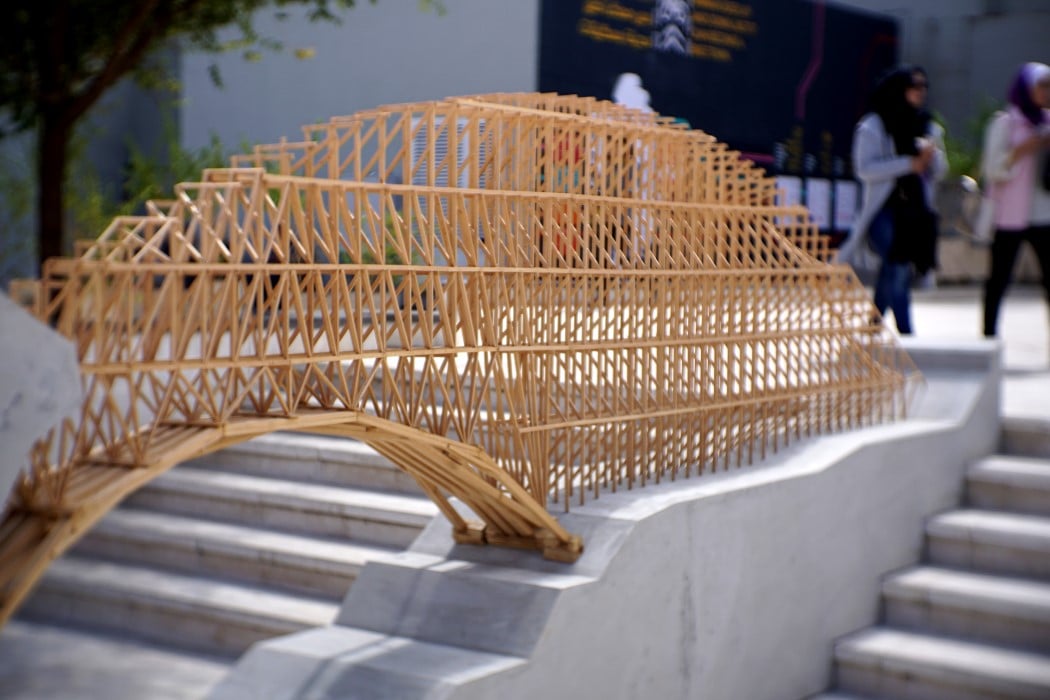
A miniature of Ammar Khammash’s Masonry Bridge shows how the bridge is to be built with its scaffolding that will gradually disappear, leaving just one single bridge in its place.
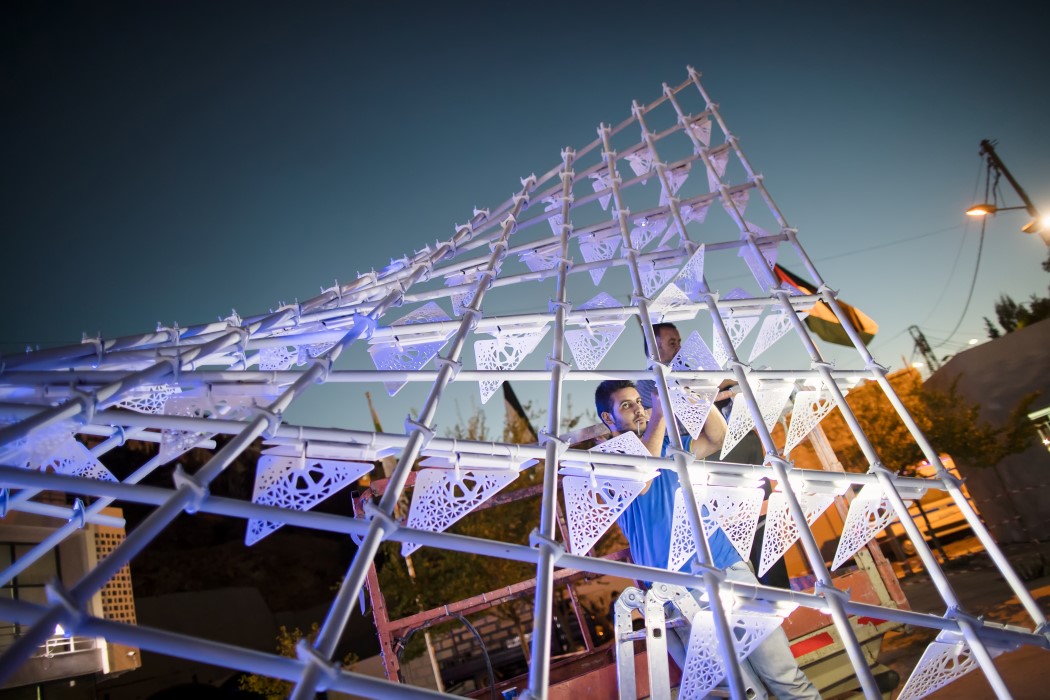
Rawan Kakish and Hamad Al Sultan’s “A Path of Synergy” literally lights up the outside space of the Hangar with these laser cut butterfly wings that light up and flutter as you stand underneath!
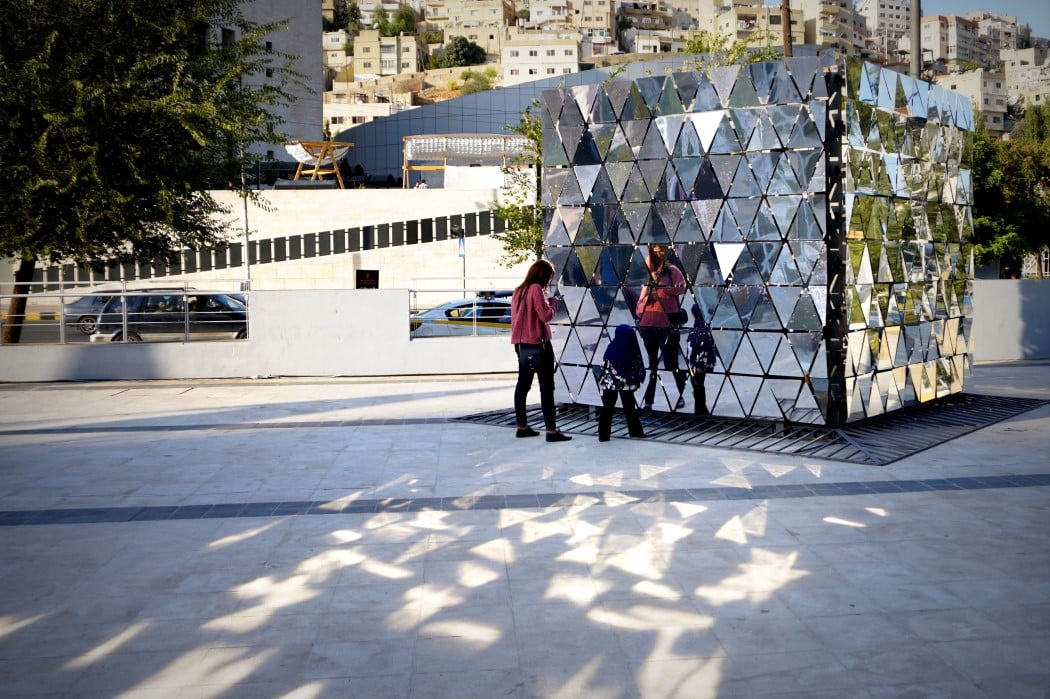
Uraiqat Architect’s X3 project features independently moving mirrors that break and then rejoin your reflection, in an attempt to make you introspect. Easily a crowd favorite!
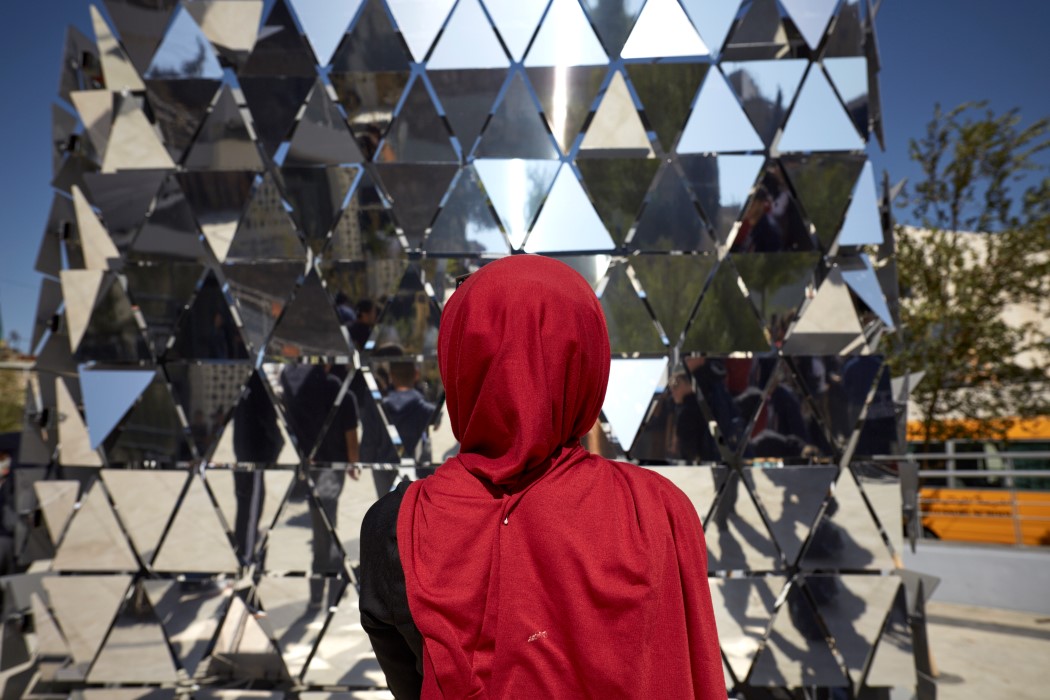
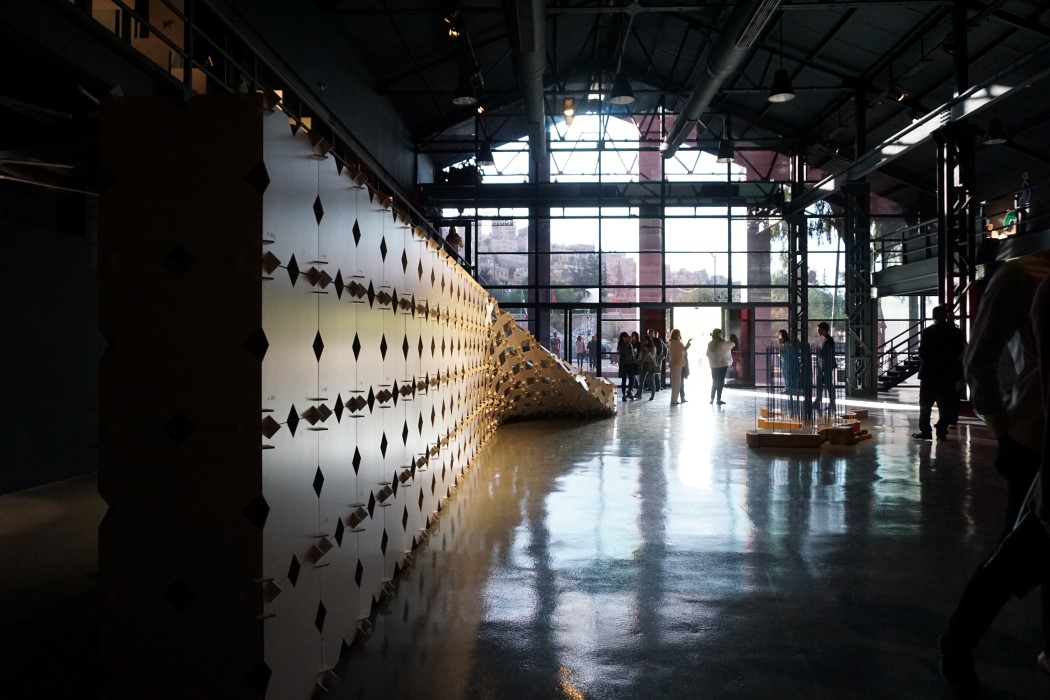
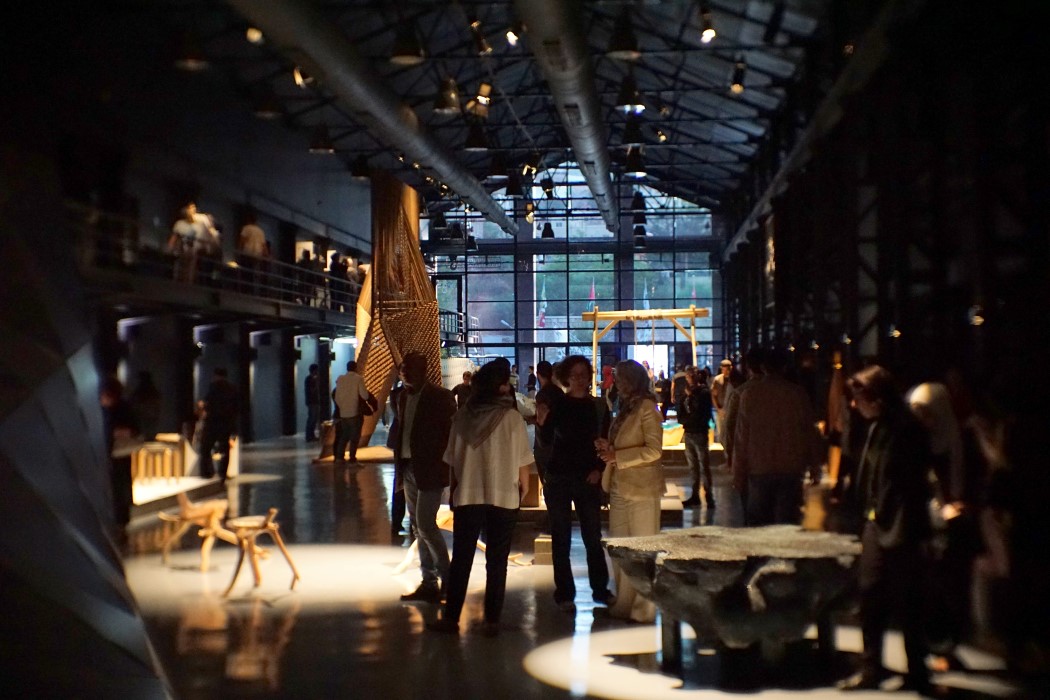
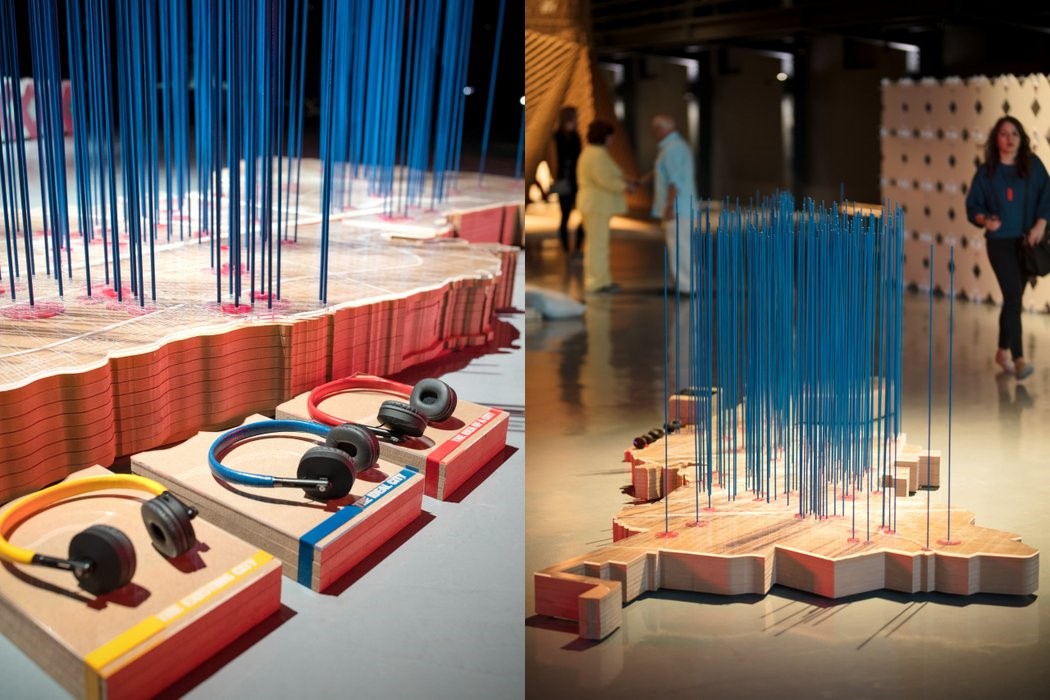
Bricklab’s Dividied by Congregation paints three soundscapes of a city. One consumed by the chaos of the city, one by the cacophony of religion, and lastly, the serenity of nature.
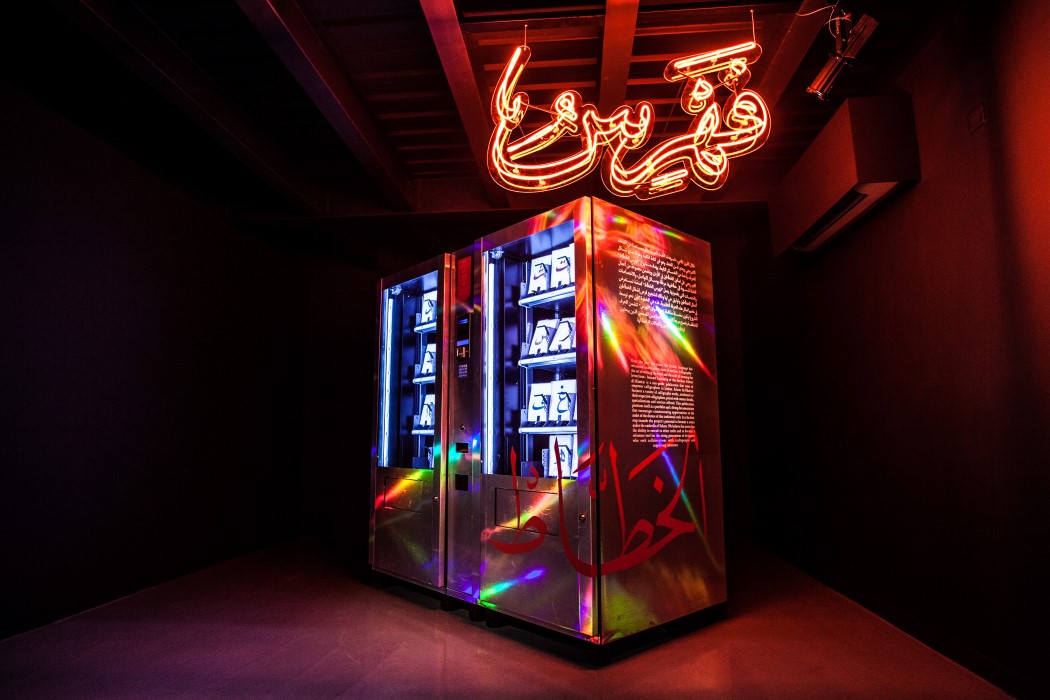
With EYEN’s vending machine, you can literally buy a font file! Just pay the machine and you get an authentic piece of Arabic calligraphy, and in turn, you support a slowly dying craft.
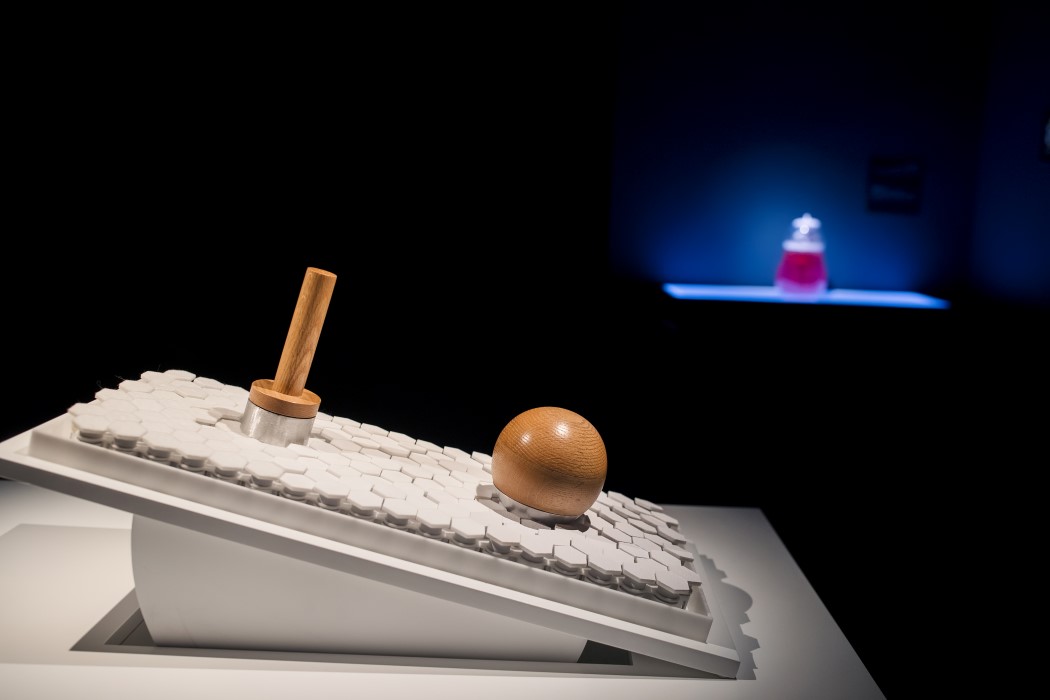
Sahar Madanat Design Studio’s Press Fit gathered a lot of attention for being one of the few exhibits that showcases design as a problem solving tool.
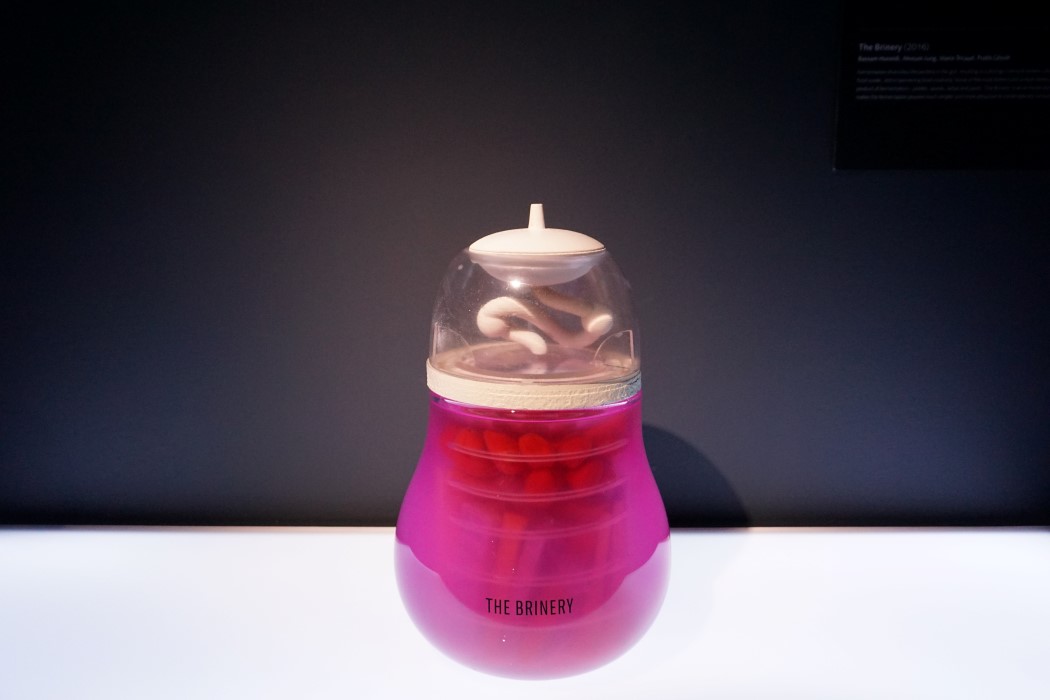
Ever wanted your own miniature fermentation setup? The Brinery is designed to simplify the fermentation and marination process. Plus, the food created in it helps diversify the healthy bacteria in your intestines!
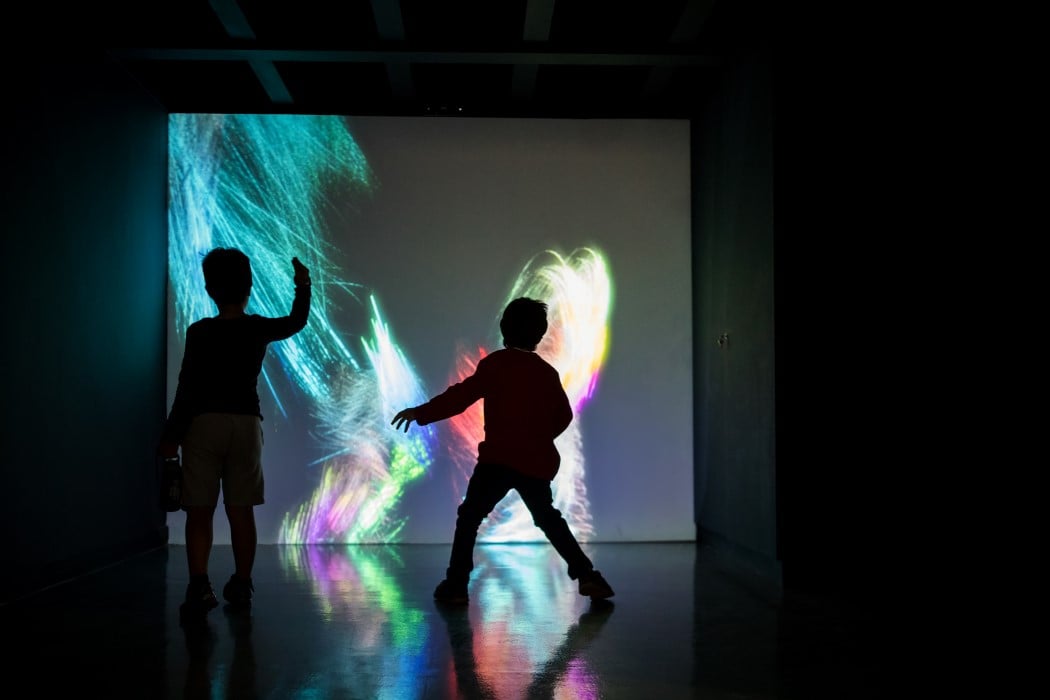
Andrei Visuals’ crazy motion installation uses a Microsoft Kinect and an algorithm to capture human movement and turn it into a colorful painting. People spent hours dancing in front of this screen!
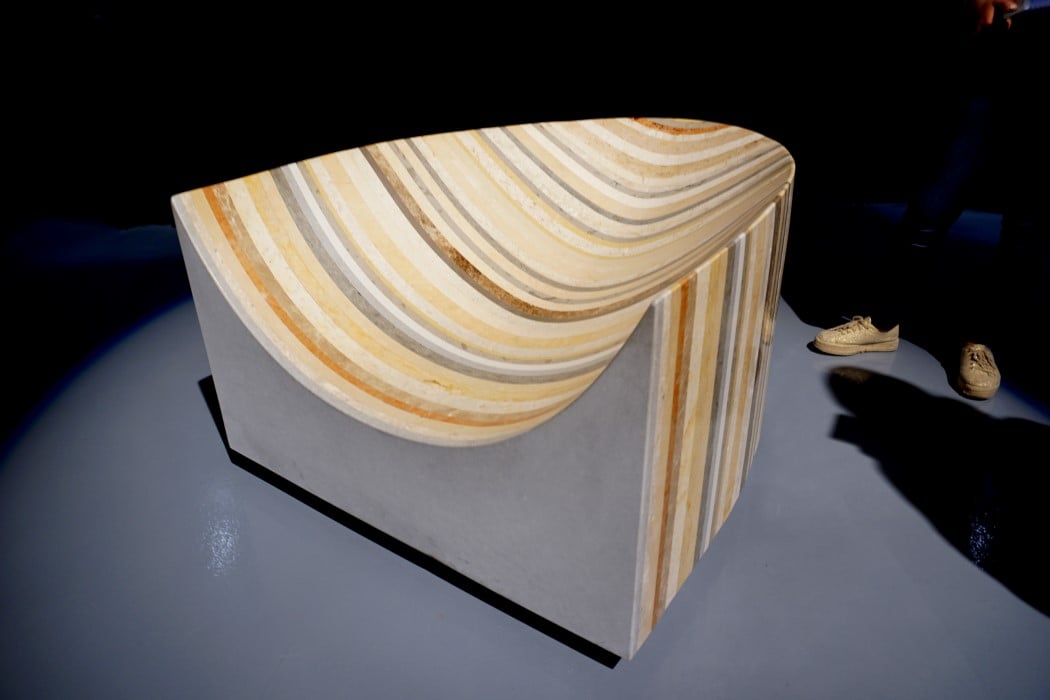
What you’re looking at is a completely new material. Kutleh (Arabic for block) is made by joining together spare/waste pieces of stone to create this layered material that can be used for sculpting and machining. Doesn’t it look incredible?
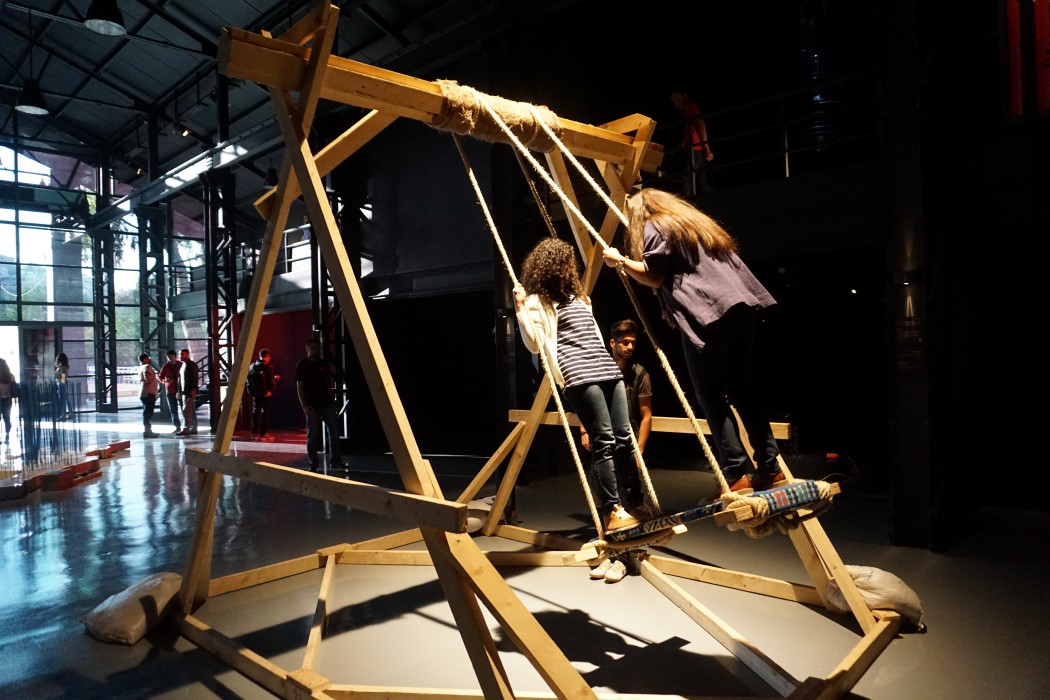
Yasmeen Sabri’s traditional swing was a hit among the public. Using just wood and rope, and with a cleverly designed IKEA-esque assembly manual, anyone can make one of their own.
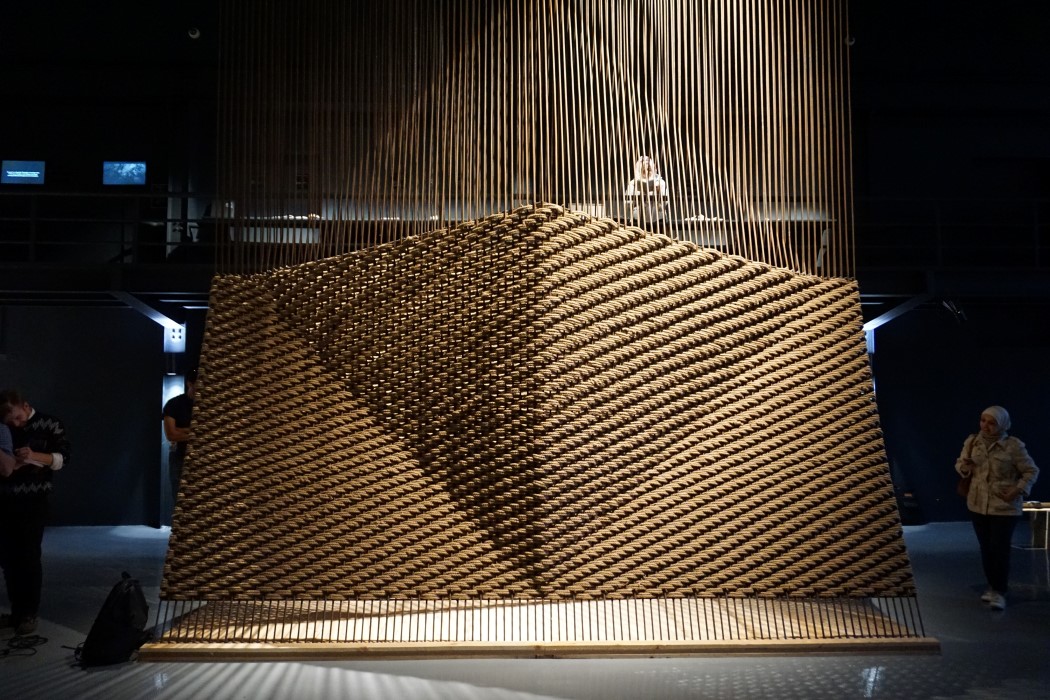
Catching all eyes as you enter the Hangar is the Left of Passage, Right of Passage, an installation by Anmahian Winton Architects that you can walk through. The installation mimics the passages of Wadi Rum’s sandstone walkways.
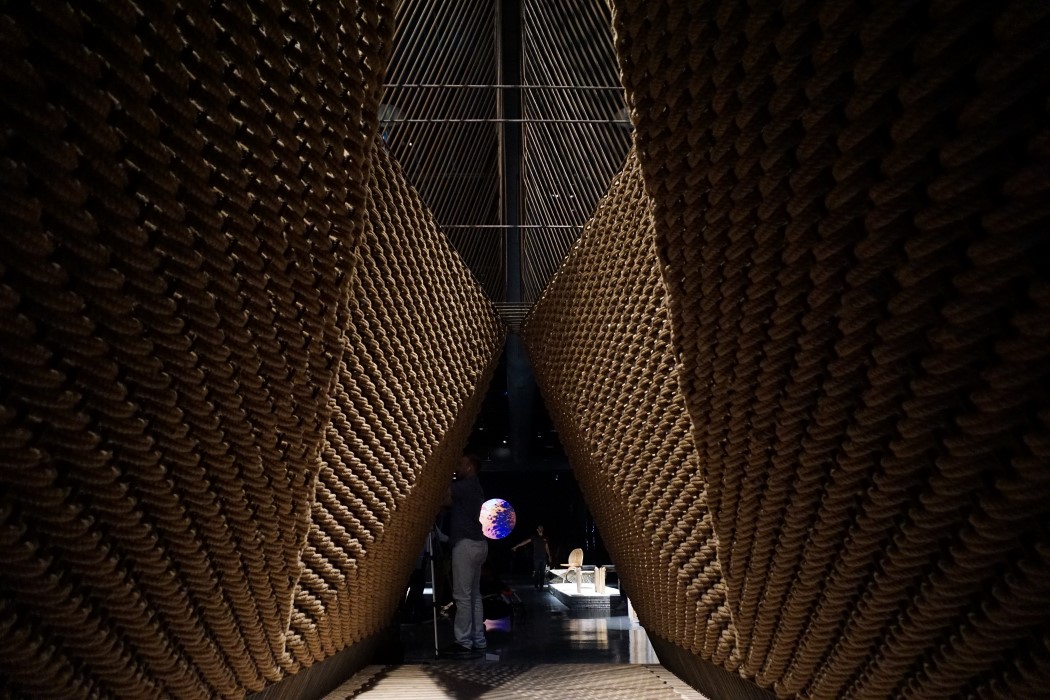
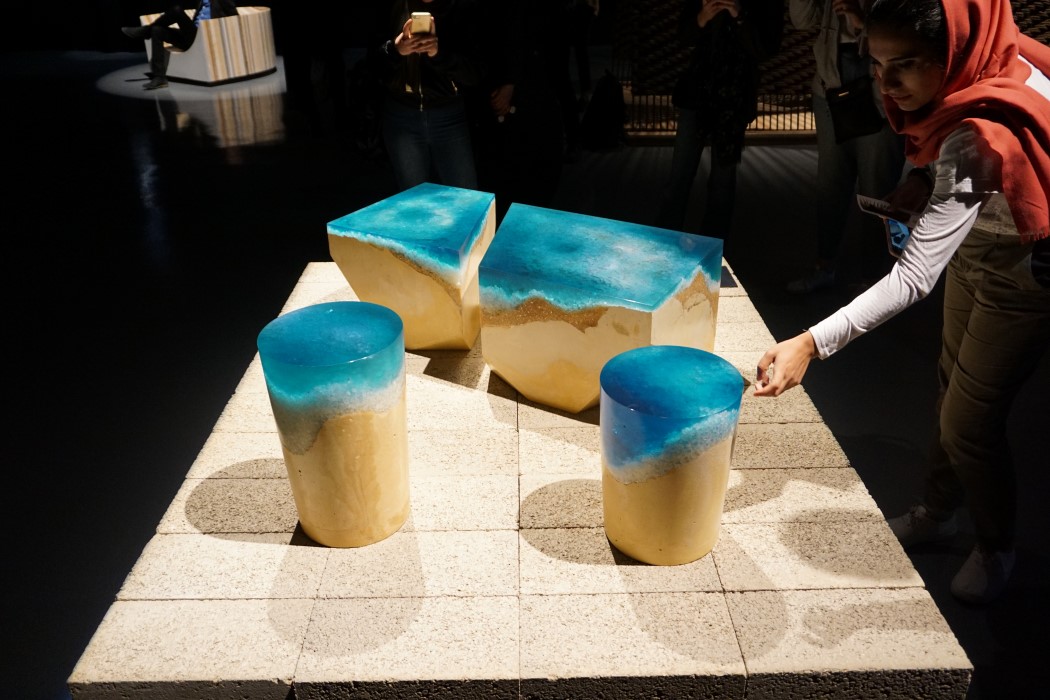
Aperçu’s Mirage uses stone, crystals, and resin to create some wonderful showpieces that looked great from afar and even better up close.

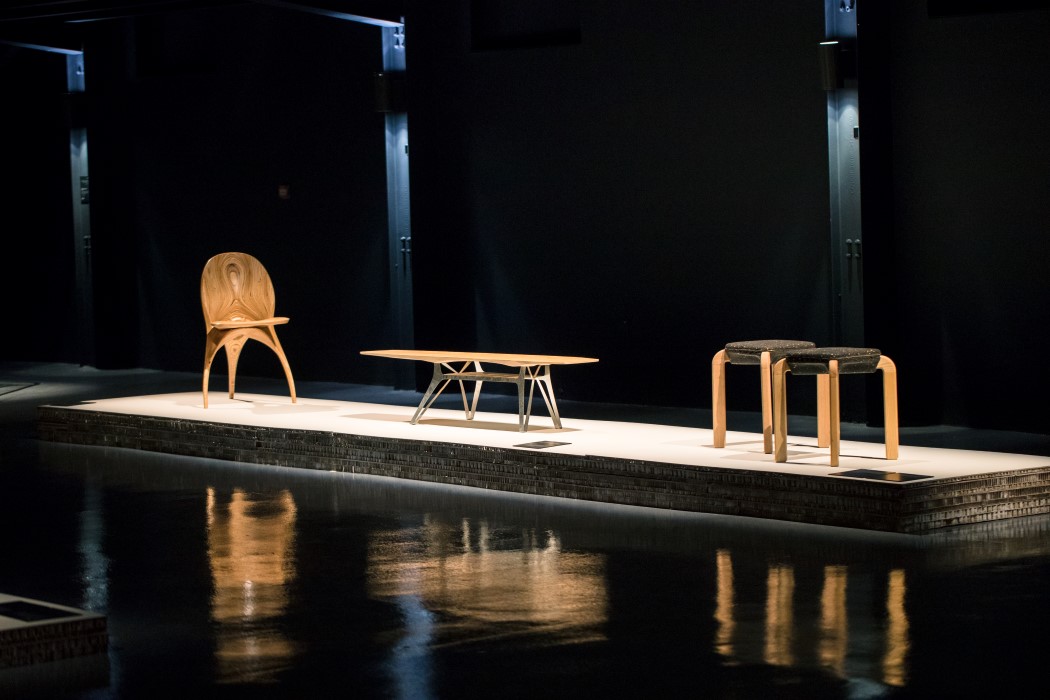
Ammar Kalo showcased his unique and mystifying furniture, made from unconventional techniques.
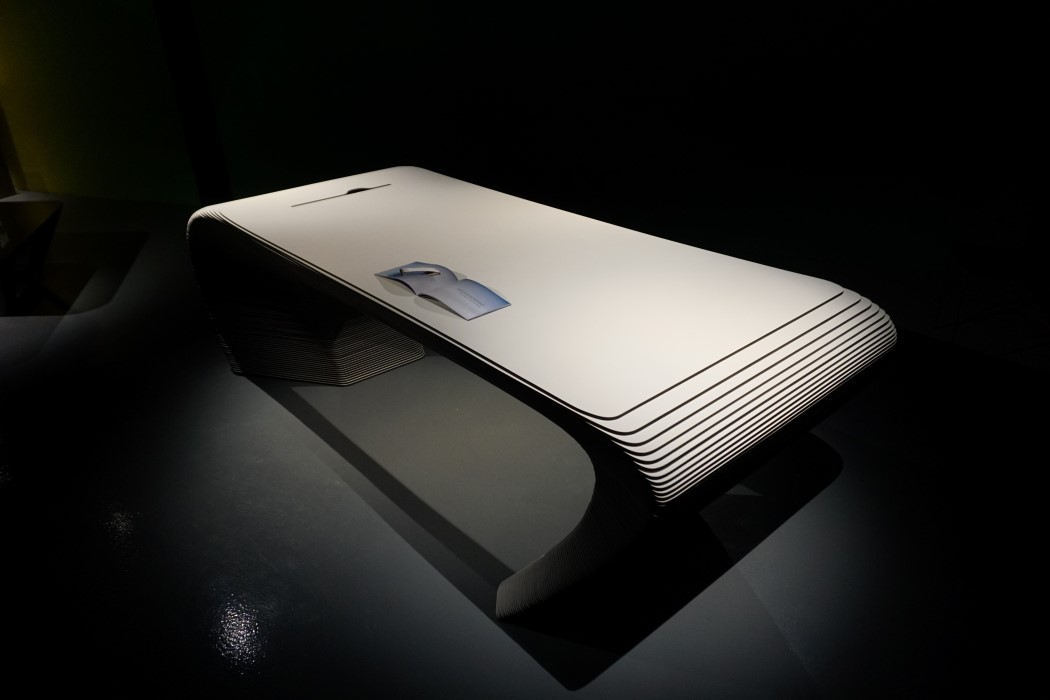
Hanna Salameh returns to ADW with the Flo Desk, a wonderfully layered desk that looks like it’s been stacked together.
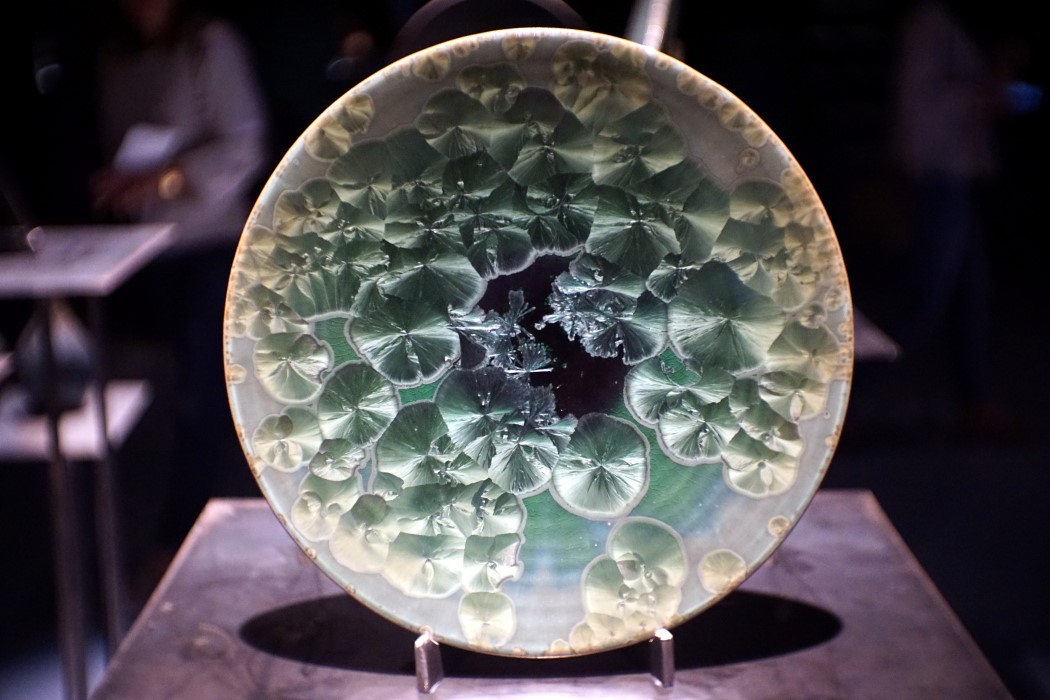
Crystallization is usually accidental in ceramic baking. What if you turn an accident into art? My opinion is it looks much better!
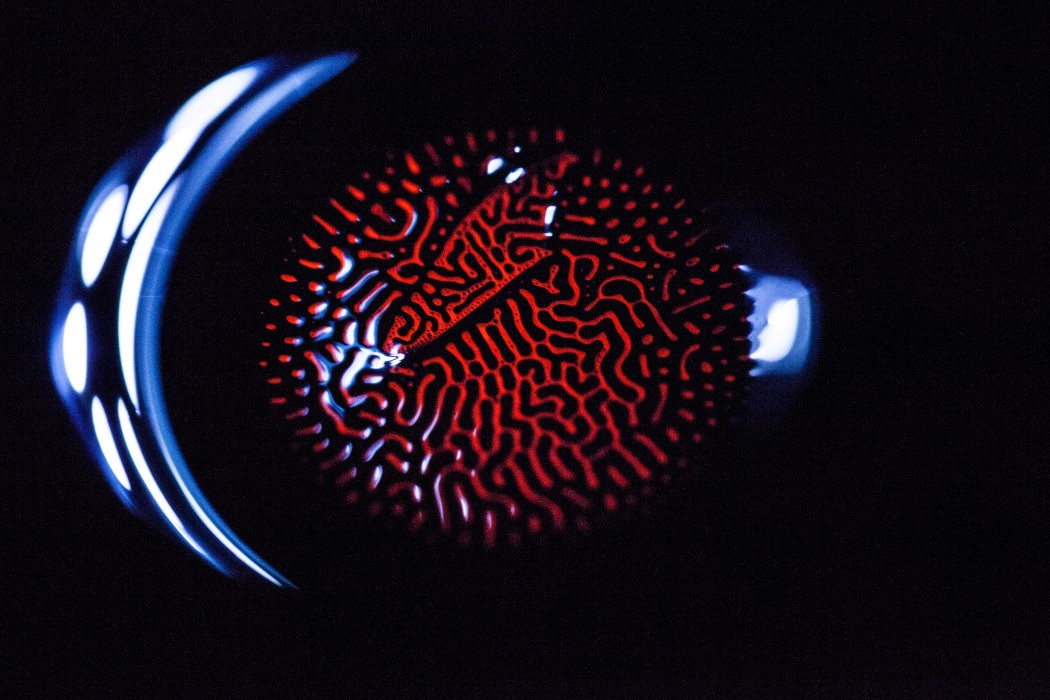
Hashem Joucka’s experiments with ferrofluid and oil paints yielded some incredibly interesting results!
Right across the road from the Hangar was Amman Design Week’s Cultural zone. A part that showcased handicrafts in a commercial light, while even having a dedicated space for reviving dying crafts from within and outside Jordan. What you see below is a look at the Cultural Plaza, a place to conduct design seminars, held below a rather beautiful bamboo strip ceiling, and the Crafts Hub a place that revived crafts like Bedouin felt-making, traditional Syrian Arabesque Mosaic making, Jordanian Stone Mosaic making, and swordsmithing. If the Hangar showcased the future of design, the Crafts District helped give it context in many ways.
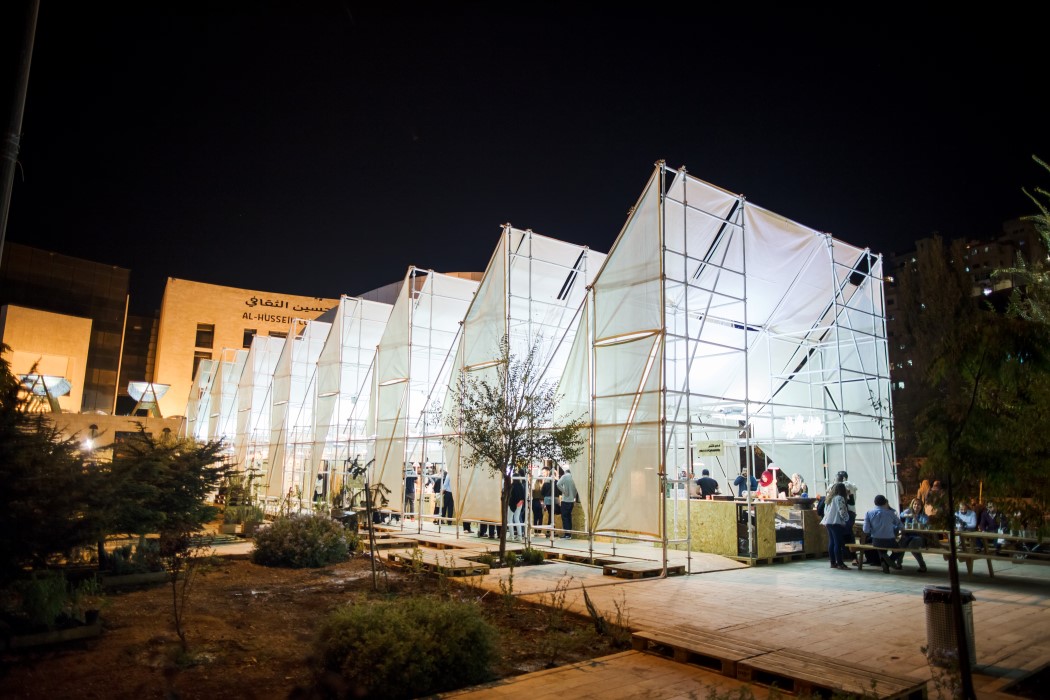
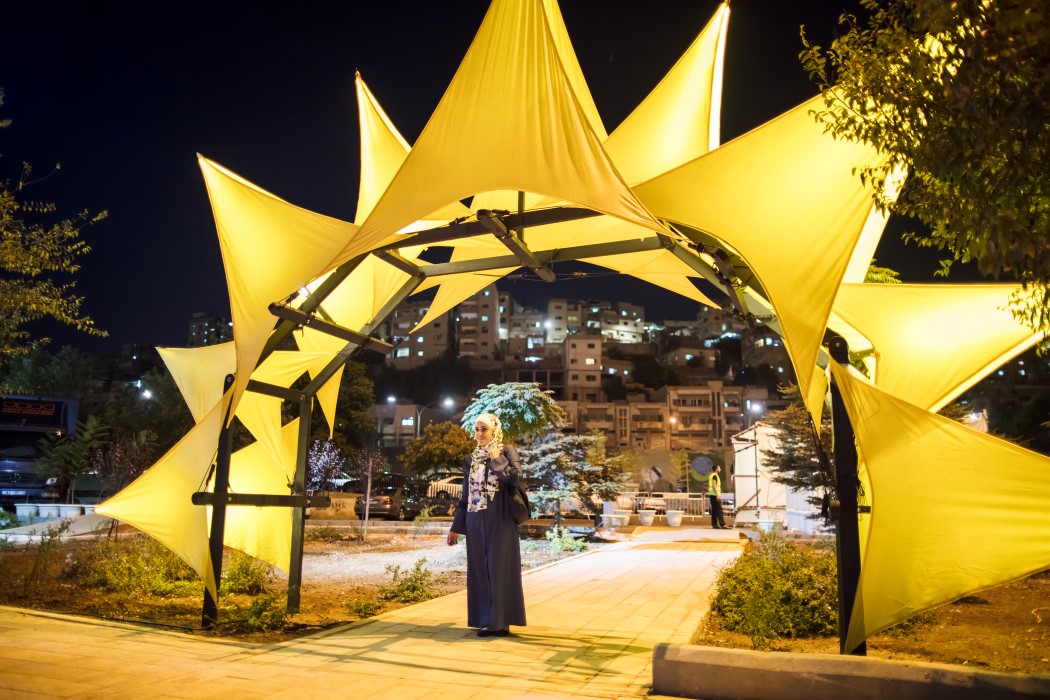
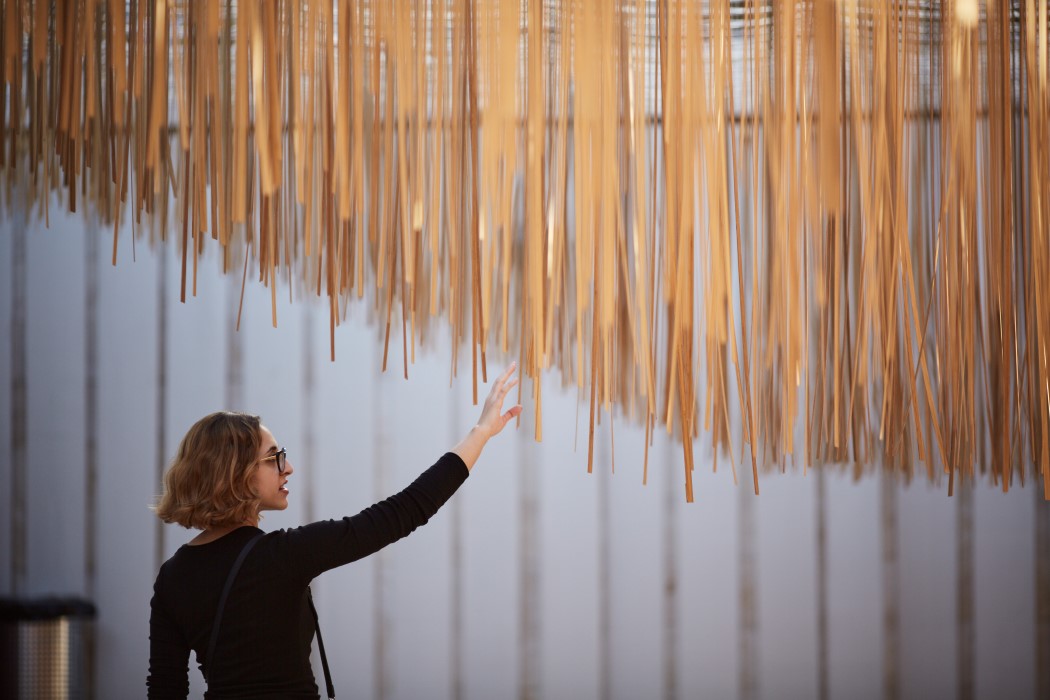
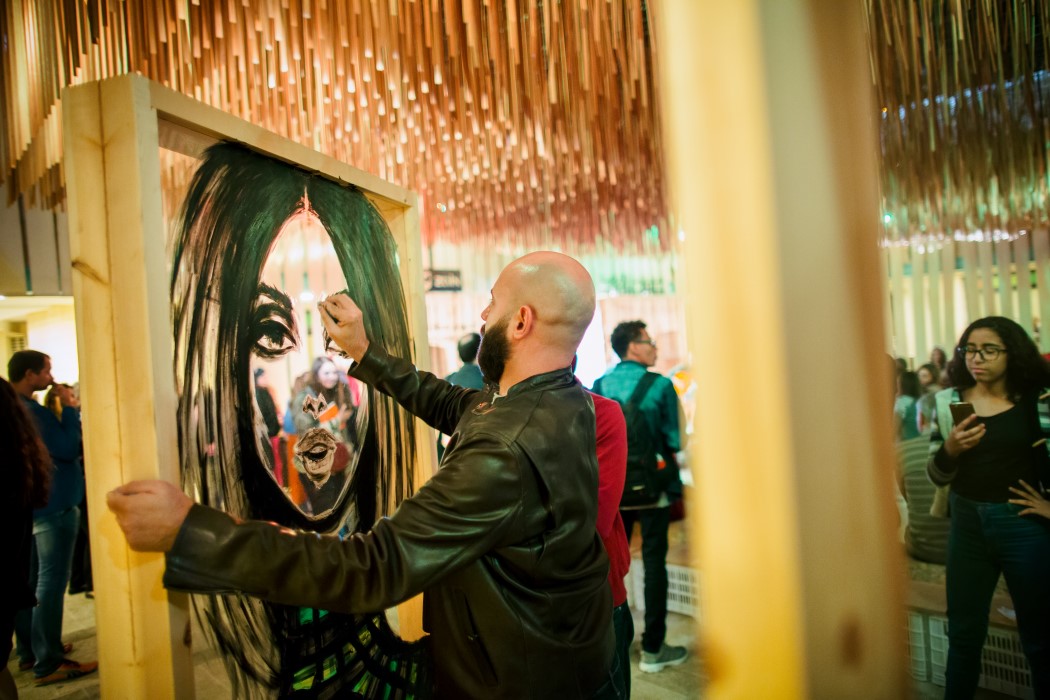
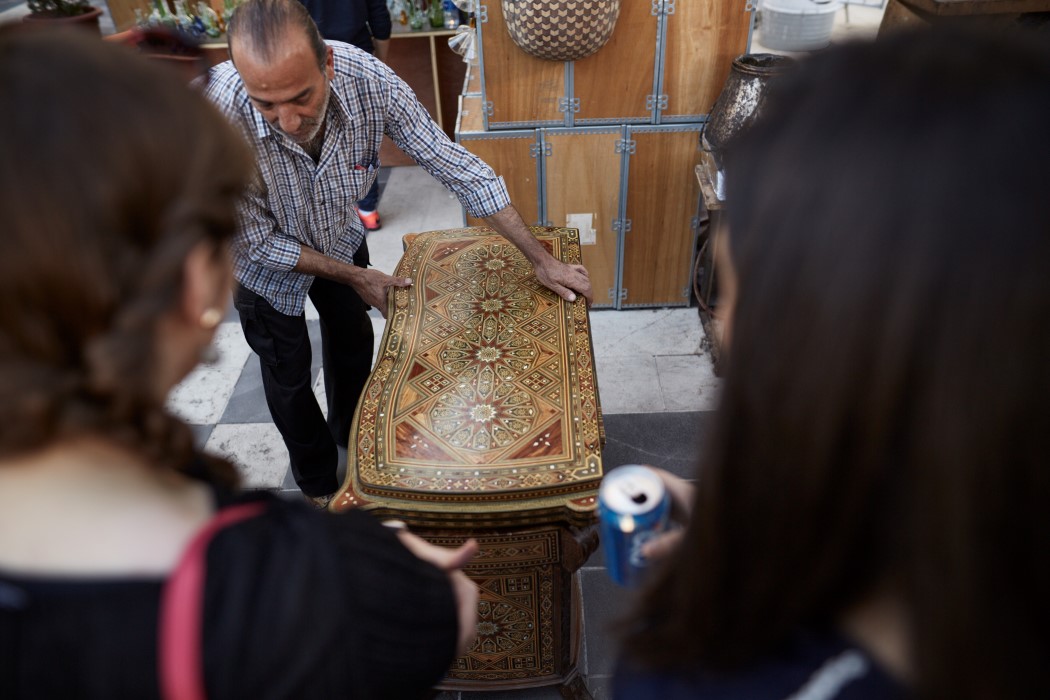
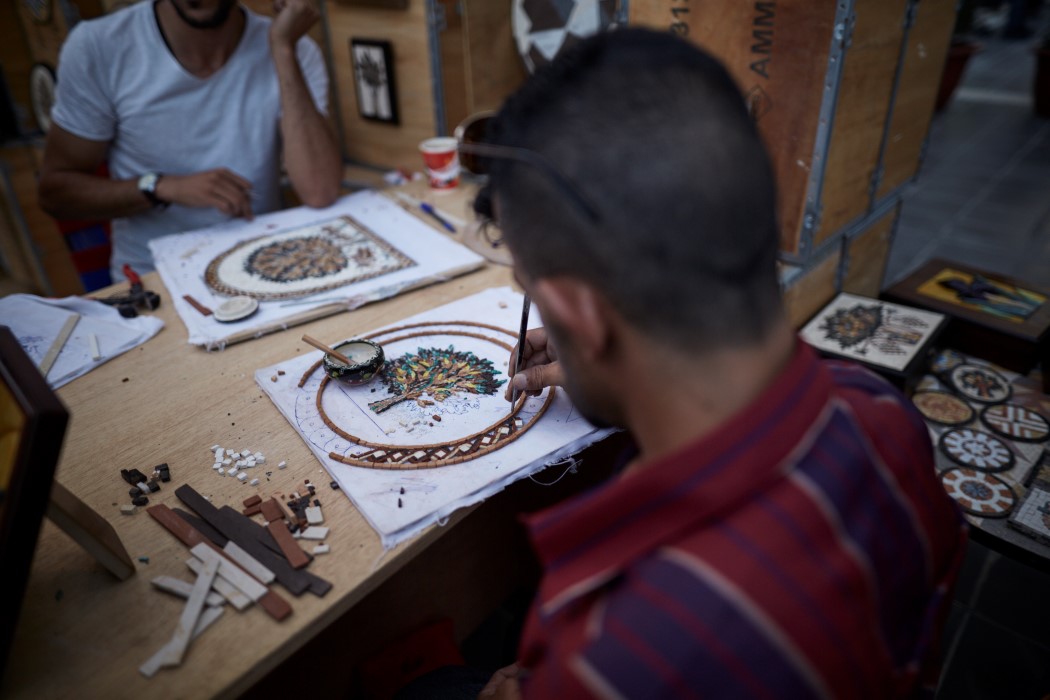
We end our tour of the Amman Design Week on a happy note. With news that only months back, the Jordanian Government withdrew its ban on 3D Printers, the country rushes to embrace the technology. Designers Sahar Madanat and Sara Bdeir talk about how industrial processes integral to design like metal fabrication, electronic integration, and plastic molding haven’t really caught on in the Middle East (forcing most designers to take up more traditional practices like furniture or textile design or to practice abroad), but the future looks bright as designers are working hard to bring talent as well as industries to the country, with the legalization of 3D printing just being the very beginning of what I can imagine is a very bright future for Design and Life in Amman and Jordan. So how do you get an entire country to talk about design? You do it the way Amman Design Week did it!
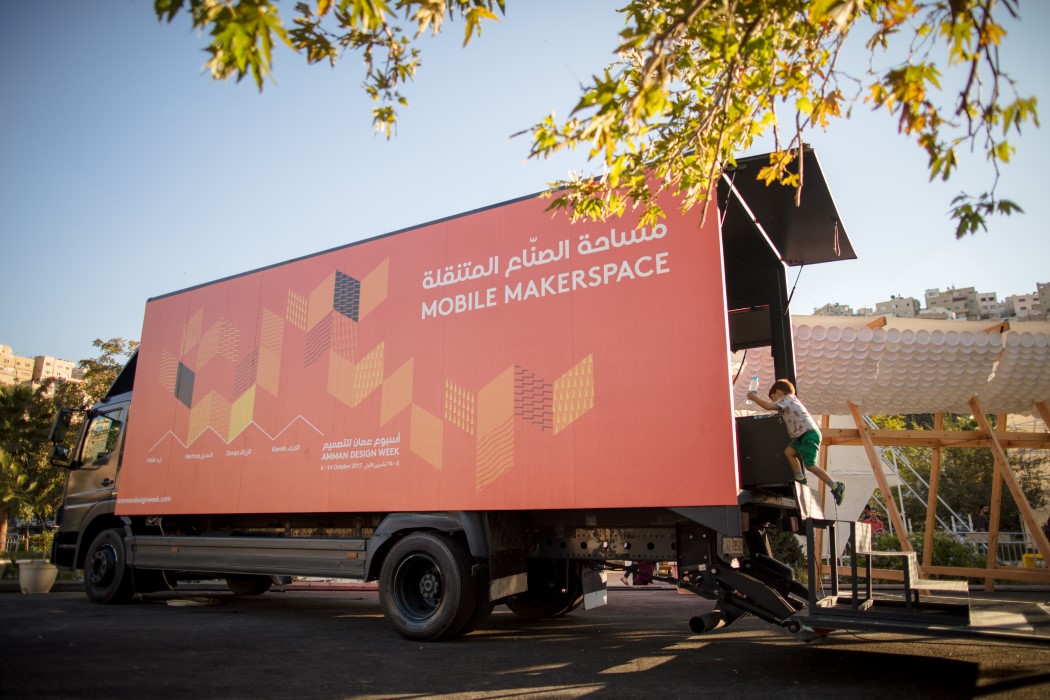
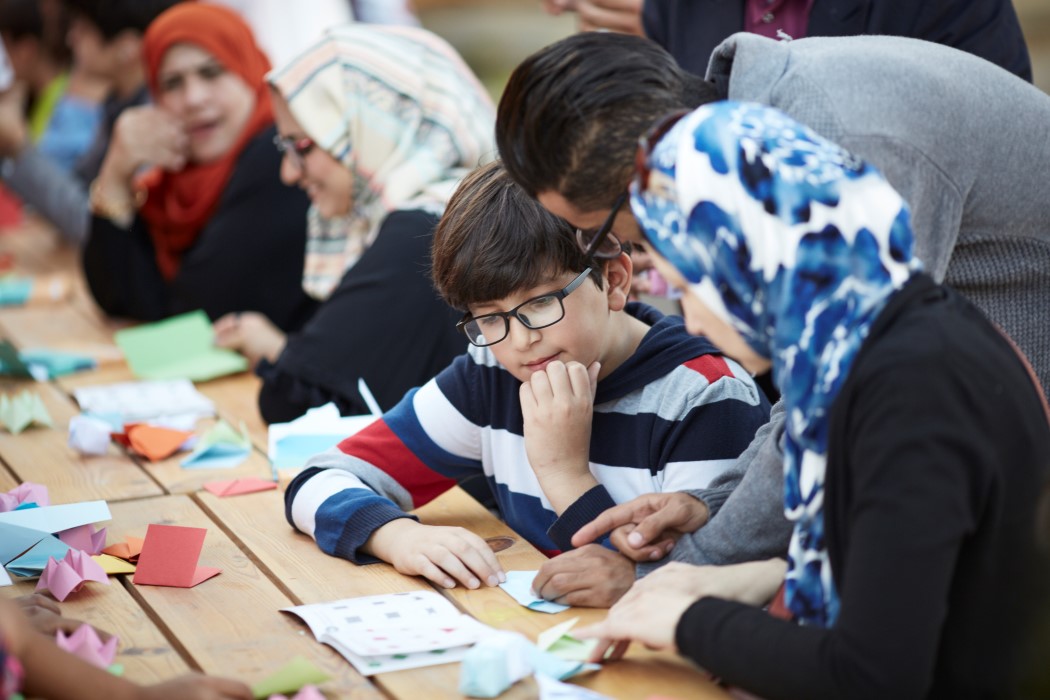
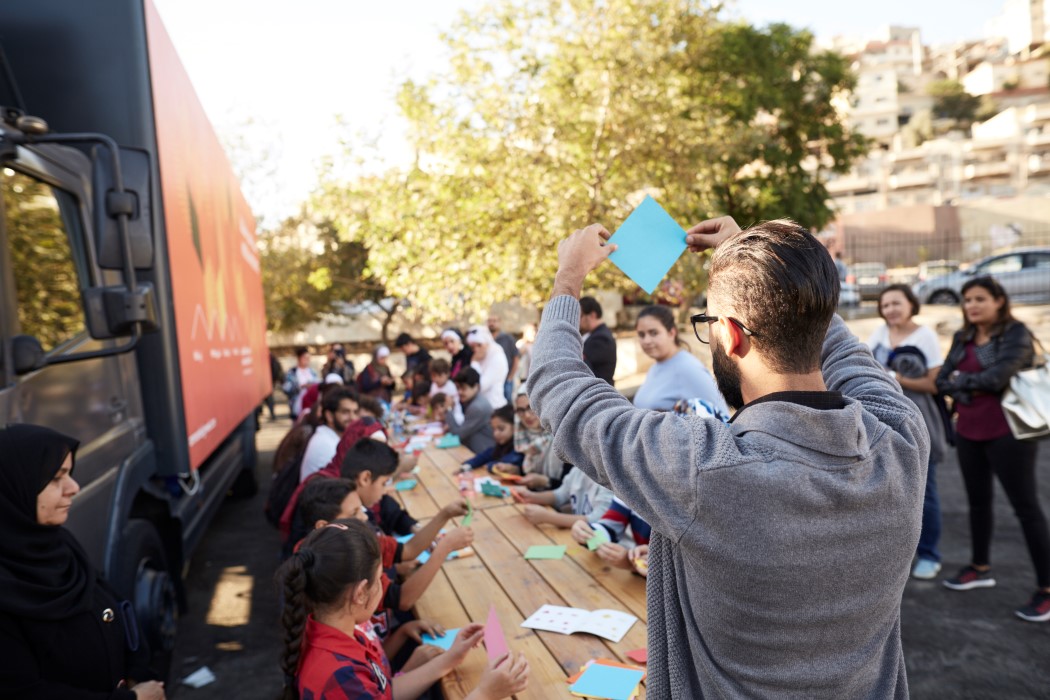
Image Credits © Amman Design Week 2017 & Yanko Design.
If you’ve been thinking about upgrading to a 4K HDR display, there’s no better time than the present – especially now that Vizio has launched their new 2017 models. I’ve been a big fan of Vizio’s displays for years, and I have the first-generation P-Series 4K display in my living room. I still love it, but I’m really tempted to upgrade to the latest P-Series model, which packs all kinds of improvements since my 2014 model.

The 2017 SmartCast P-Series is a full 4K UHD display, with support for HDR content in Dolby Vision and HDR10 formats. It’s got 128 local dimming zones for impressive levels of contrast, and deep, dark blacks, backlight scanning and a 240Hz refresh rate for smooth action. They’ve also coined a few new branded buzzwords, including “XLED Pro,” “XHDR Pro,” and “Xtreme Black Engine Pro,” all of which I assume are supposed to make their tech sound better than Samsung’s QLED. Bottom line, from my experience, Vizio’s full-array local dimming is enough to do that all on its own.
The SmartCast P-Series comes in 55″, 65″, and 75″ versions, priced at $1299.99, $1999.99, and $3,499.99 respectively. If you’re looking to save a little bit of money, or want a different size display, you should also consider the latest SmartCast M-Series. The M-Series supports 4K and HDR, but only offers “XHDR Plus,” another fairly meaningless buzzword. In technical terms, it supports 32 local dimming zones, and a 120Hz refresh rate, so it won’t be quite as precise with its contrast as the P-Series, and you might see a little more flicker in action scenes. Still, if it’s anything like last year’s M-Series displays, it’ll still be excellent.

The SmartCast M-Series comes in 50″, 55″, 65″, 70″ and 75″ versions, priced at $799.99, $999.99, $1499.99, $1999.99, and $2999.95 respectively.
Both the P-Series and M-Series feature Chromecast built-in, so you can view content from the numerous Chromecast-enabled apps, even 4K and HDR content from Netflix and Vudu. You can even start up your TV using the Cast button on your phone or the remote, and the display will automatically turn on and start playing the content you selected.
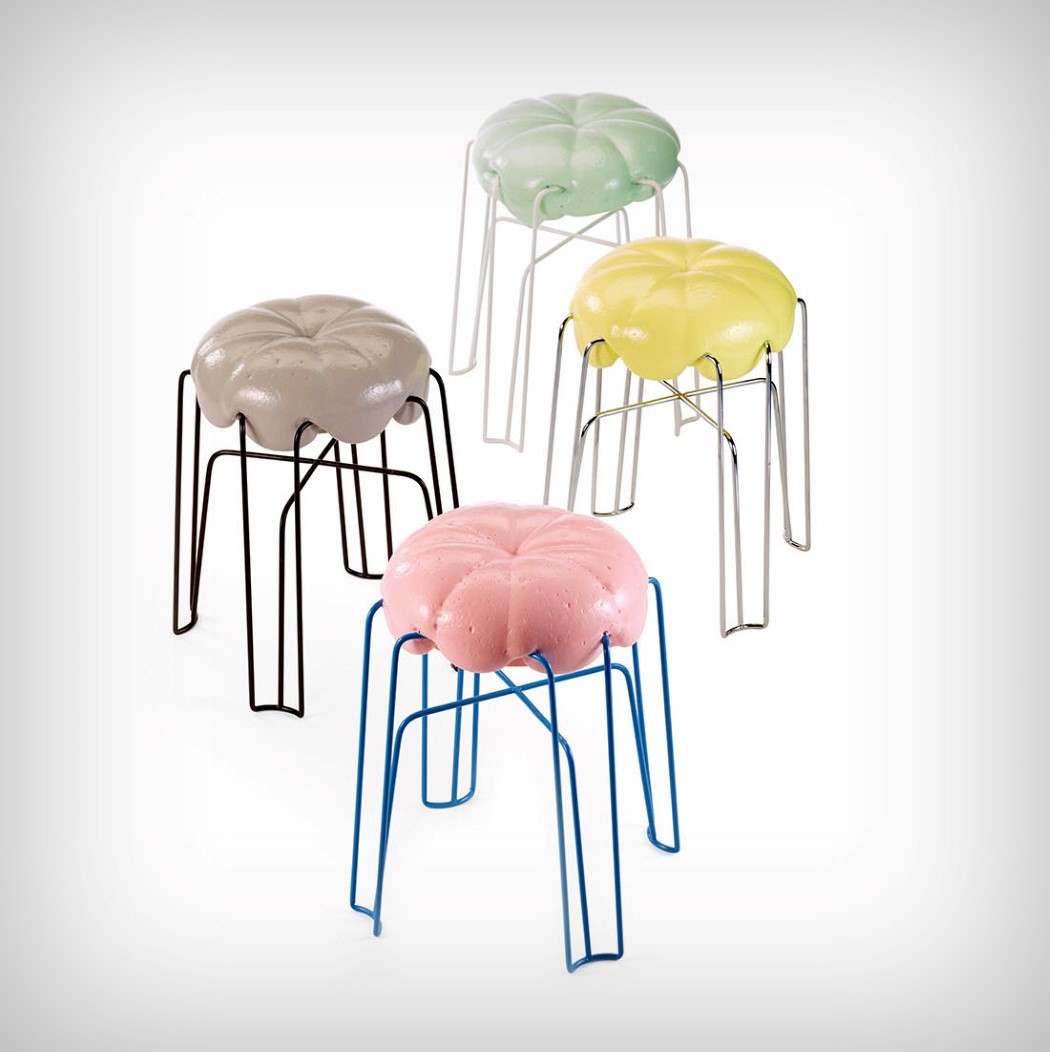
Paul Ketz is back with his uncanny, unconventional take on conventional products, aesthetics, and functionality. The designer won the A’ Design Award last year for his beautifully disorganized Nest Organizer that took the concept of order and married with chaos, resulting in a product experience filled with awe, curiosity, and joy. The Marshmallow stool aims to bring about that same reaction, by challenging the notion of how stools should be manufactured and whether form should follow function, or whether it should follow the manufacturing process.
The Marshmallow Stool comprises a single metal pipe base and a foam seat. The eye instantly goes to the way the foam seat looks to be melting over the metal base, giving it the appearance of being incredibly soft. However, the most aesthetic element of the stool (the seat) is probably the most un-designed. The designer derived the aesthetic by creating a foam base that sits below the metal mesh and expands upwards. The intersecting pipes then give the foam its “whipped” appearance, making it look like its namesake, a marshmallow. Each stool’s foam seat is unique since they don’t use molds, but rather rely on the metal piping to give them their uniquely satisfying form!
The Marshmallow Stool is currently on display at the Milan Design Week from the 4th to the 9th of April, along with the Nest and other design works by Paul.
Designer: Paul Ketz
